After the wonderful morning walk around Borkovačko Lake and the breakfast at the hotel, I went by car to the centre of Ruma (Рума) and there I first visited the Church of St. Nicholas that is categorised as immovable cultural property of great importance.
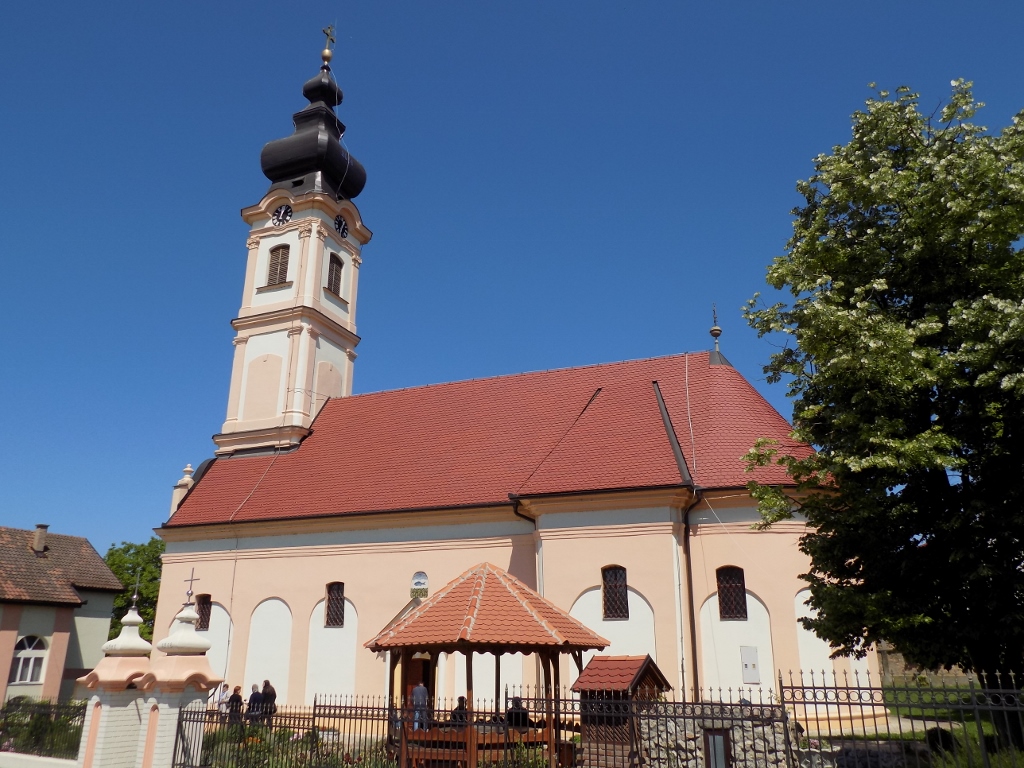 Church of St. Nicholas in Ruma
Church of St. Nicholas in Ruma
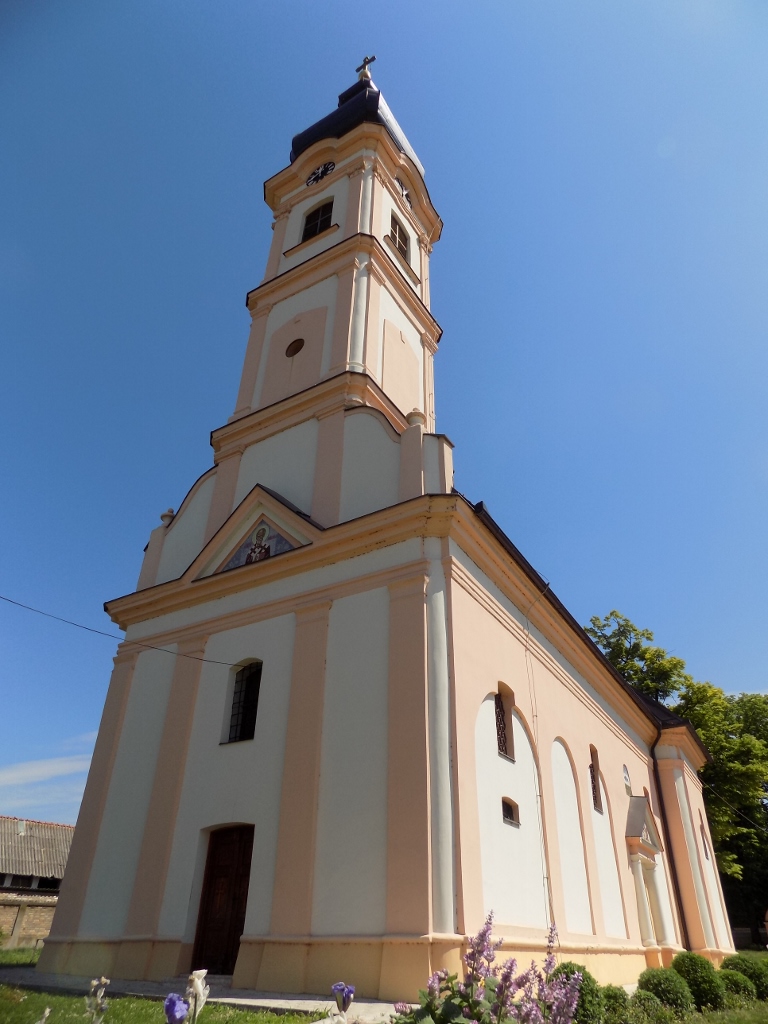 Church of St. Nicholas in Ruma
Church of St. Nicholas in Ruma
It was built in 1758 and it is one of the oldest baroque churches in Vojvodina. The historic documents suggest that there was a church in Ruma already from 1566 and that one was the forerunner of present one also called Nikolajevska crkva.
This church also has a single nave, an altar apse in the east and the tower in the west, and there are also extensions for the choirs. The south portal is very nicely done.
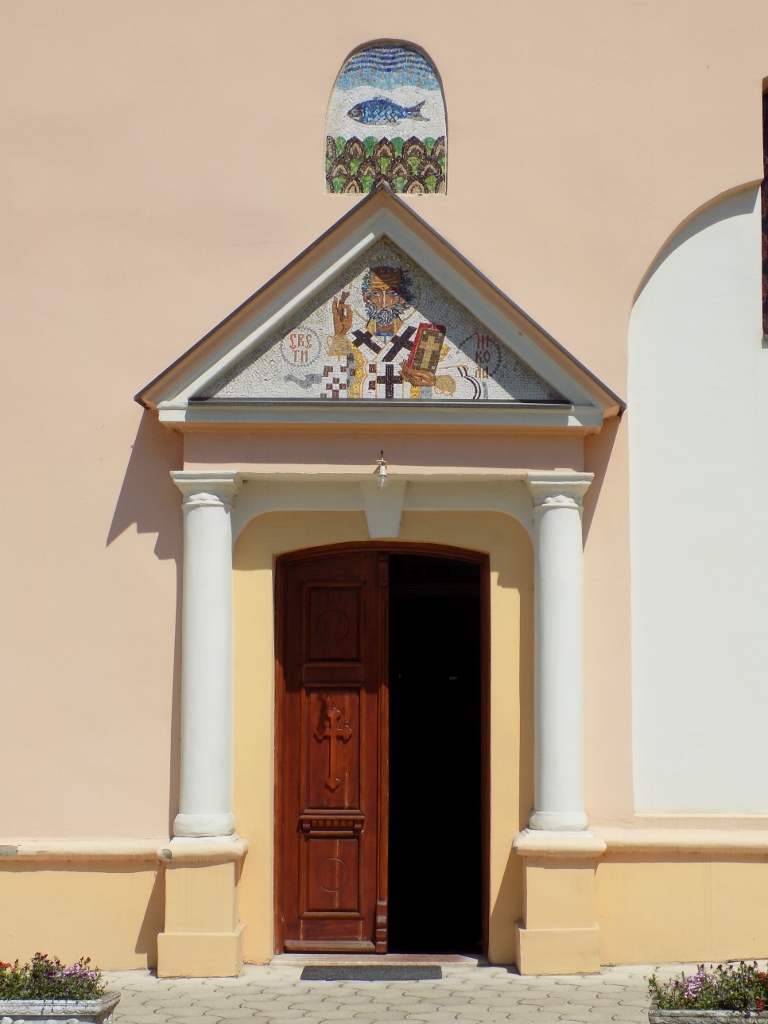 Church of St. Nicholas in Ruma, south portal
Church of St. Nicholas in Ruma, south portal
As usual, the focus of the interior is on the altar partition, i.e., the iconostasis.
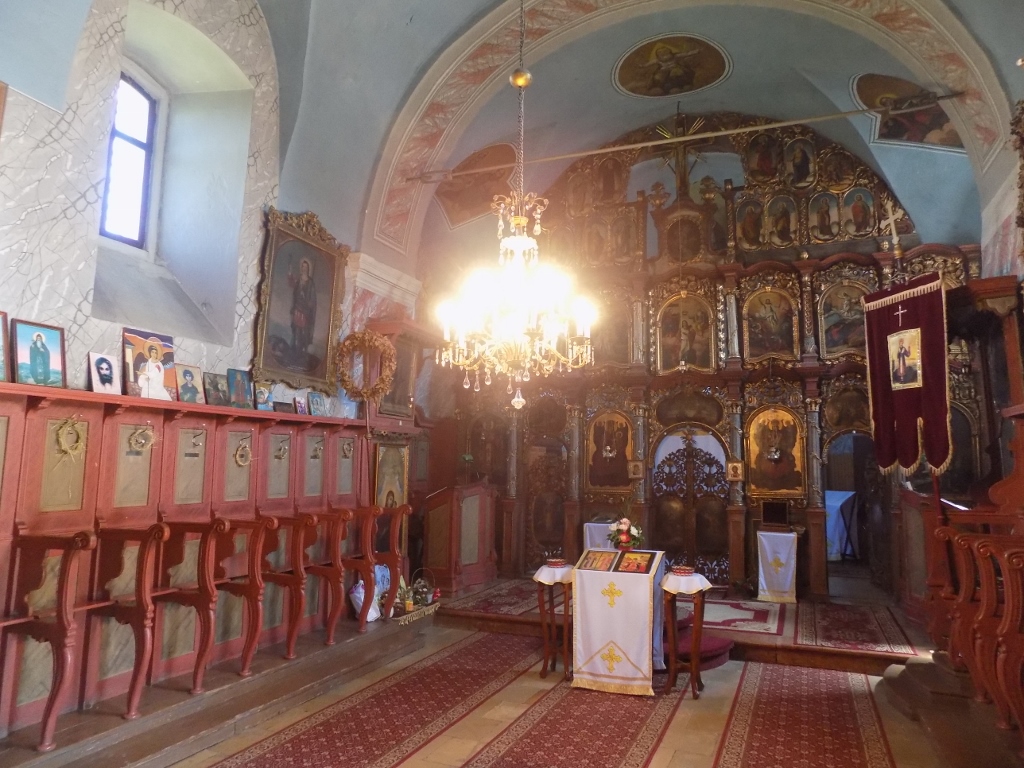 Church of St. Nicholas in Ruma, the interior
Church of St. Nicholas in Ruma, the interior
The wooden carved iconostasis was made in 1847, while the icons as well as the wall paintings are the work of artists from Novi Sad.
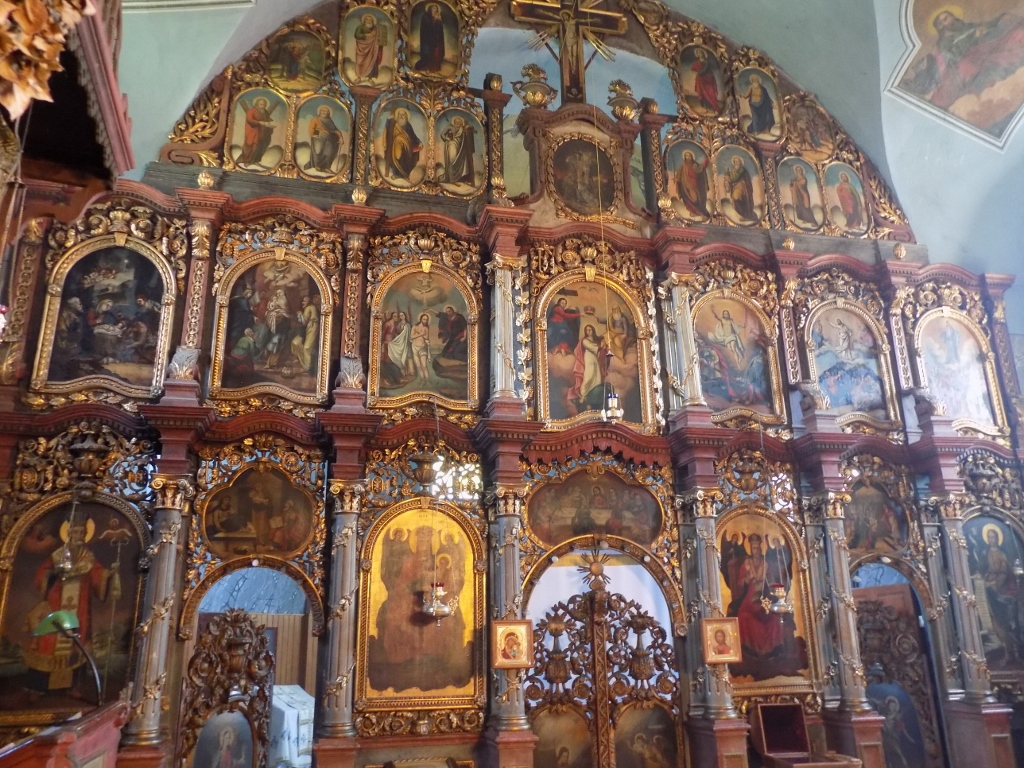 Church of St. Nicholas in Ruma, iconostasis
Church of St. Nicholas in Ruma, iconostasis
After the visit to this church, I took my car to be washed, while I continued with my sightseeing of Ruma on foot. The next item in my visit plan was the Church of the Descent of Holy Spirit or Pentecost and that is an immobile cultural property of great importance.
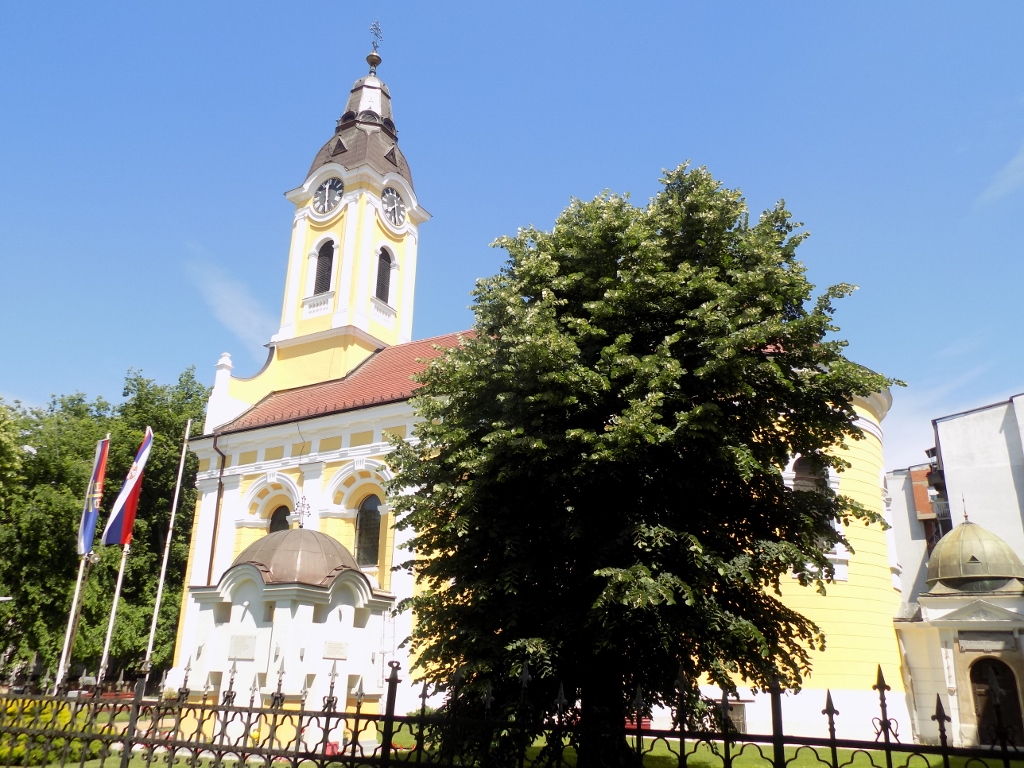 Church of the Descent of Holy Spirit in Ruma
Church of the Descent of Holy Spirit in Ruma
By the way, the Pentecost refers to the Descent of Holy Spirit upon the Apostles in Jerusalem on the 50th day from the Resurrection of Christ and this practically also marks the birth of the Church itself, since from then the apostles full of Holy Spirit started to spread the word so that all the people could understand them.
The construction of the Church of the Descent of Holy Spirit started in 1836 in the place where in the past there used to be a wooden church, primarily thanks to wealthy Aromanian merchants and for this reason it is often called the Greek Church. By the way the Aromanians are an ethnic group living in the Balkan Peninsula and nowadays most of them live in Greece. Also, many of very famous and distinguished individuals are Aromanians and I would like to mention Branislav Nušić (born as Alkibijad Nuša) the author of the most brilliant Serbian comedies.
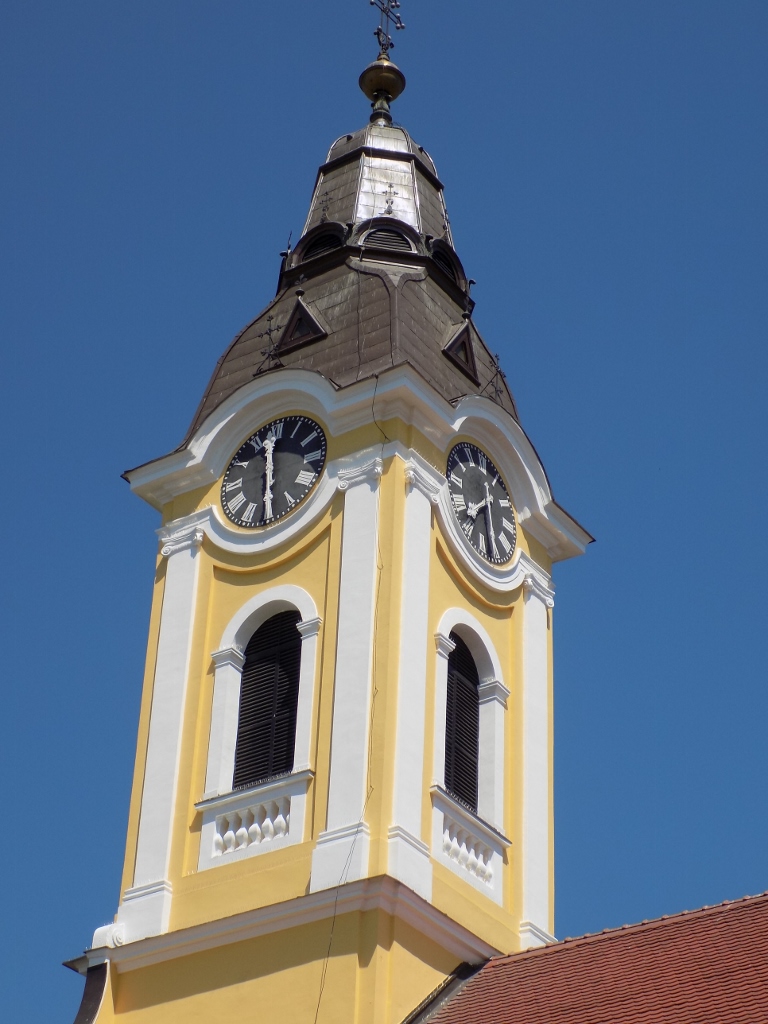 Church of the Descent of Holy Spirit, a detail
Church of the Descent of Holy Spirit, a detail
Although built in a slightly different style in comparison to the churches previously seen during this trip, this church that was completed at the beginning of the 20th century also follows the same concept as the other ones, in terms of a single-nave edifice with a semi-circular altar apse in the east and a tall bell tower in west. The church has a very opulent facade decoration and its western facade with the main entrance is particularly interesting.
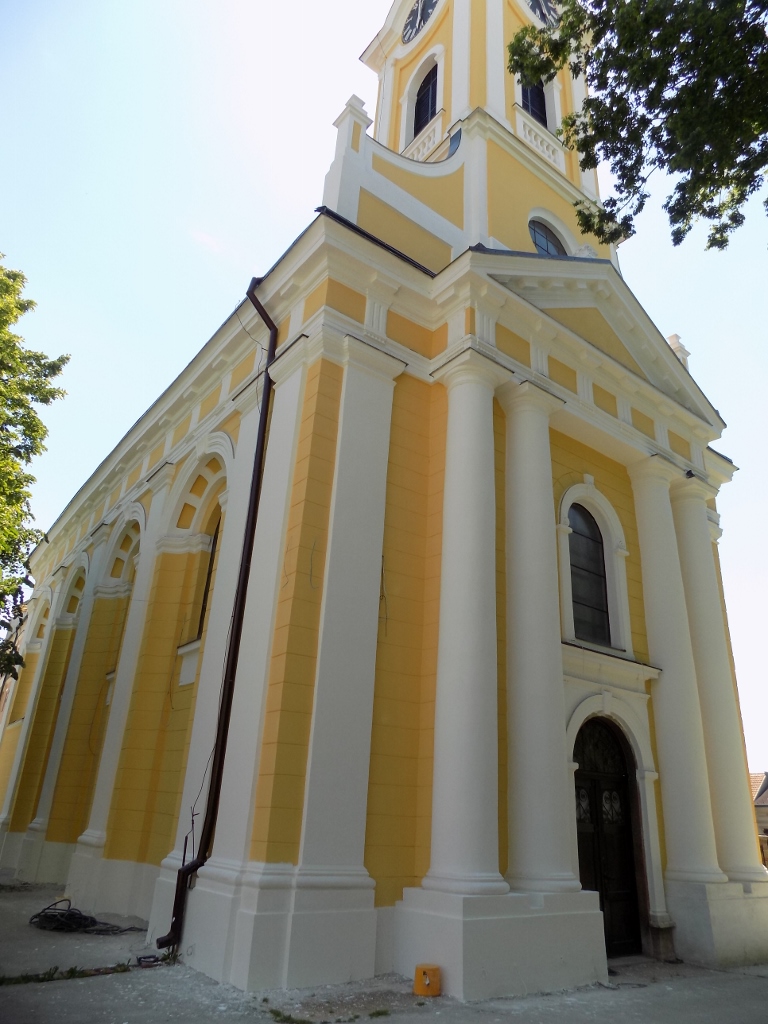 Church of the Descent of Holy Spirit, western facade
Church of the Descent of Holy Spirit, western facade
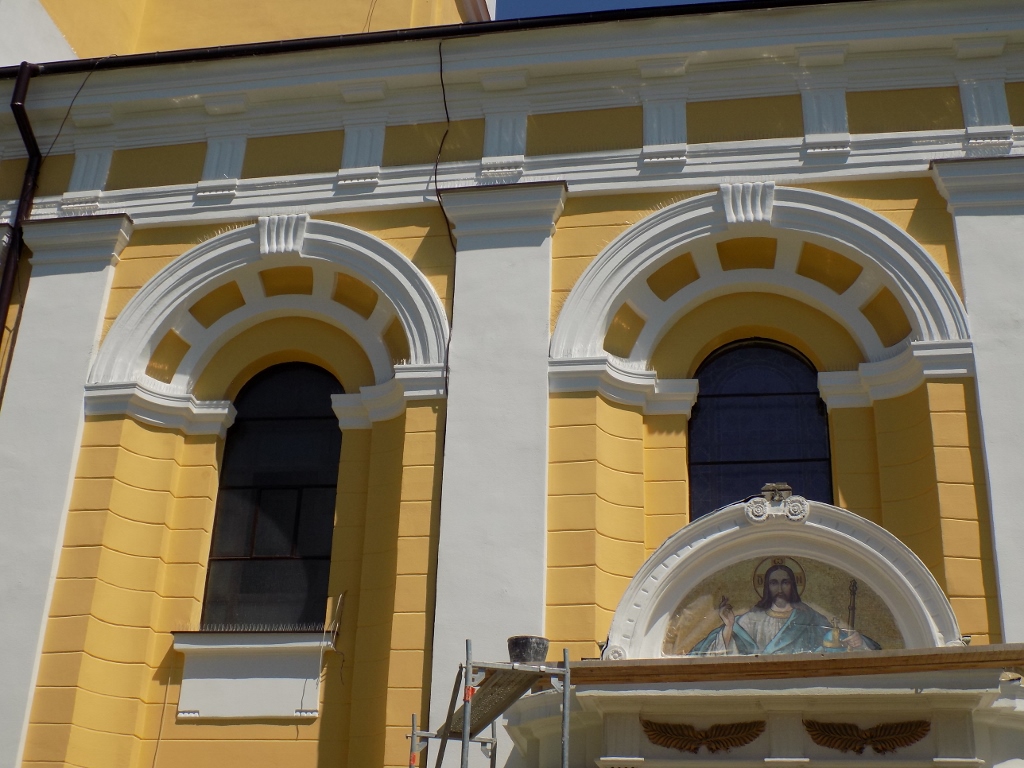 Church of the Descent of Holy Spirit, facade decoration above the south portal
Church of the Descent of Holy Spirit, facade decoration above the south portal
The iconostasis was installed in 1851 in the still unfinished church and there are also some simple stained glass windows here. Judging by the empty slots in the iconostasis in June 2021, it was clear that here, too, the icons had been sent for restoration.
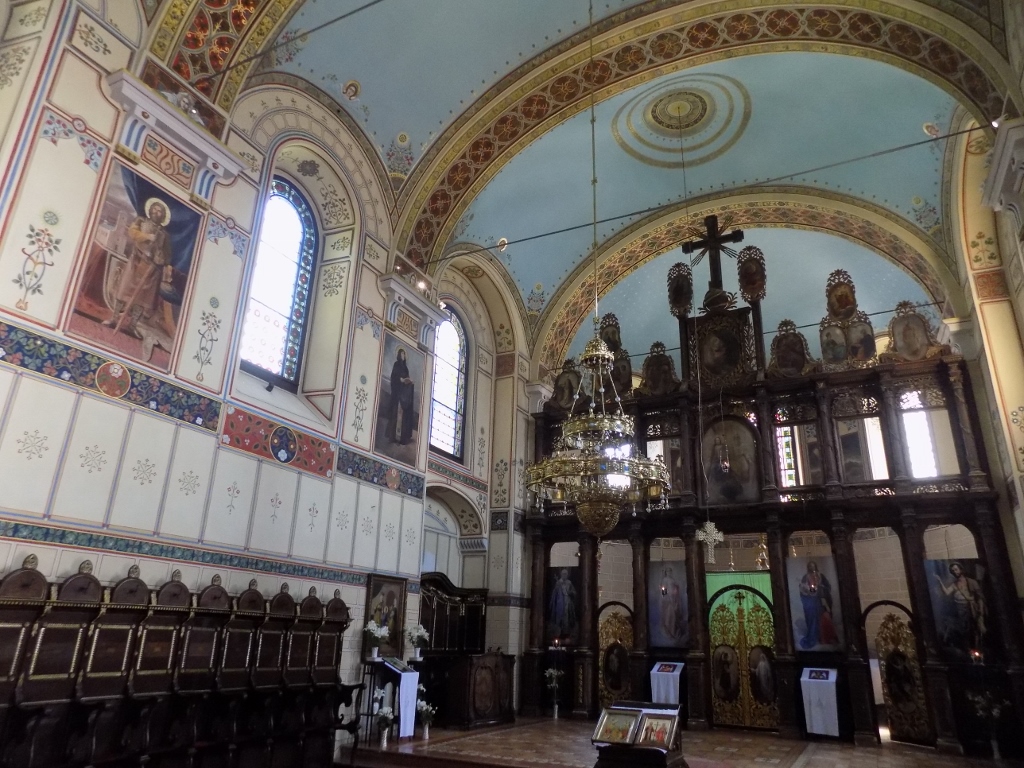 Church of the Descent of Holy Spirit, the interior
Church of the Descent of Holy Spirit, the interior
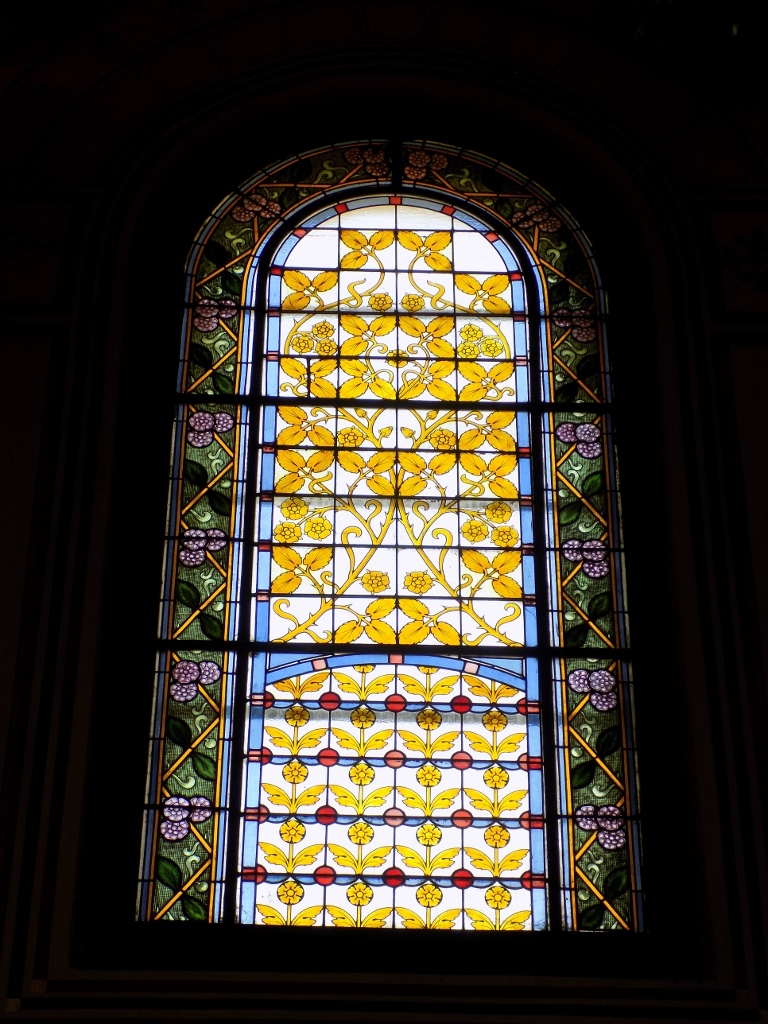 Church of the Descent of Holy Spirit, one of the stained glass windows
Church of the Descent of Holy Spirit, one of the stained glass windows
In the church I also noticed two plaques that actually explained some details. One said that Vasa and Marija Maksimović had financed the restoration and the decoration of the church in 1903-1904. The other one explained the reason: in 1902, their only daughter died (she was born in 1881) and because of this they not only financed the restoration of the church, but also on the east side of the church there is a small sepulchre of the Maksimović family. The Resurrection scene on the ceiling of the crypt was done by Uroš Predić (1857-1953), a famous Serbian painter who, together with Paško Vučetić (1871-1925), a famed painter himself, was also in charge of the painted decoration of the iconostasis, the thrones and choirs.
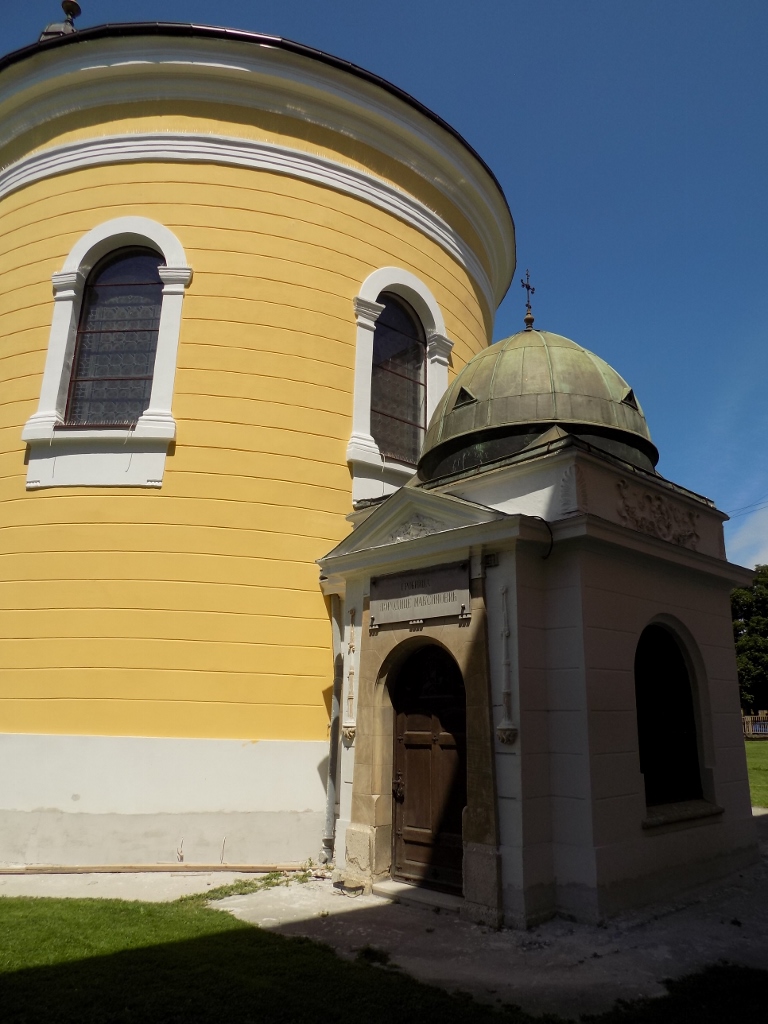 Small sepulchre of the Maksimović family, resting against the altar apse of the Church of the Descent of Holy Spirit in Ruma
Small sepulchre of the Maksimović family, resting against the altar apse of the Church of the Descent of Holy Spirit in Ruma
From the yard of this church, one can have a very nice view of the bell tower of the Roman Catholic Church of the Exaltation of the Holy Cross that is situated on the other side of the main street in the town. This is also an immobile cultural property of great importance, but I first went to the local museum.
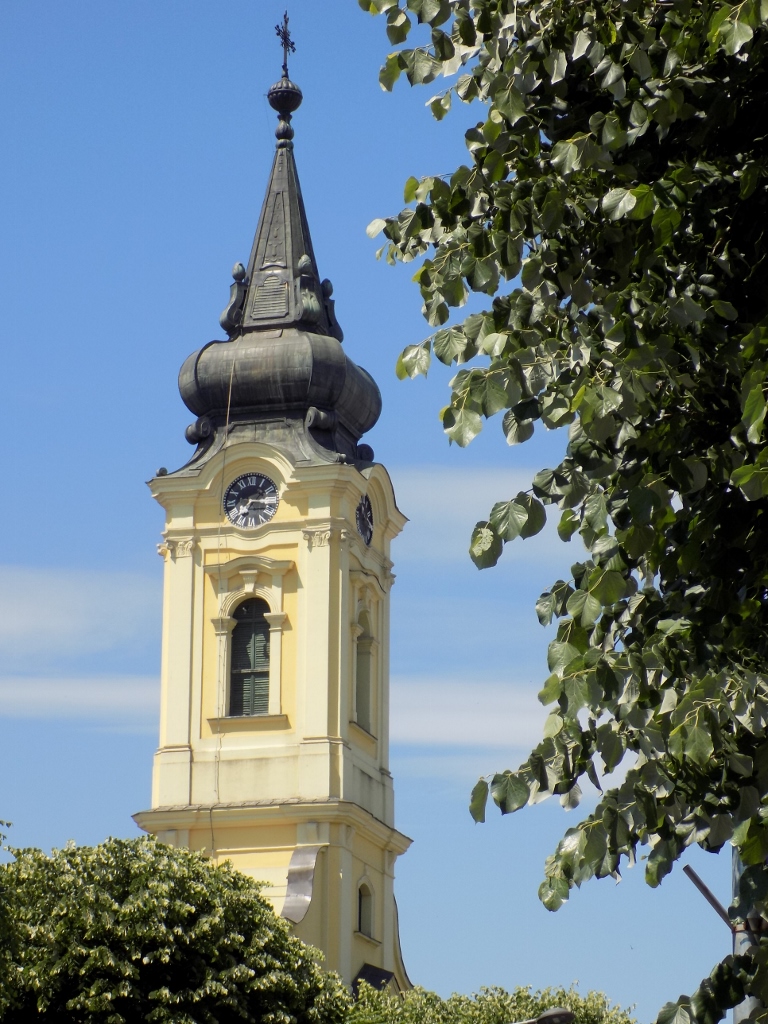 Bell tower of the Catholic Church of the Exaltation of the Holy Cross
Bell tower of the Catholic Church of the Exaltation of the Holy Cross
The museum building is also categorised as an immobile cultural property of great importance. The building was constructed in 1772 and it is said that it was the first building in Ruma with two floors, which was actually not difficult at all, since “new” Ruma was founded around the middle of the 18th century by Baron Marko Pejačević who also had this building constructed. Namely, before this time, there was the village of Ruma here (it is mentioned for the first time in the second half of the 16th century). So, around the middle of the 18th century, Baron Pejačević established his seat here and so the construction of the new urban settlement started, while soon after Ruma got the official status of a market town. In a way, the tradition of an important trading town has been kept in Roma even to the present times. I was here on 3 June, quite by coincidence, and yet every 3rd day of the month there is a traditional fair taking place in the town. However, this was not the case on this day and during this year because of the pandemic and so I just spent my time visiting the monuments of culture.
So, the building of the Ruma County Museum has a very simplified and unassuming appearance, which is in line with the fact that it belongs to the military-borderline architecture, since this area was very close to the border between Austro-Hungary and the Ottoman Empire.
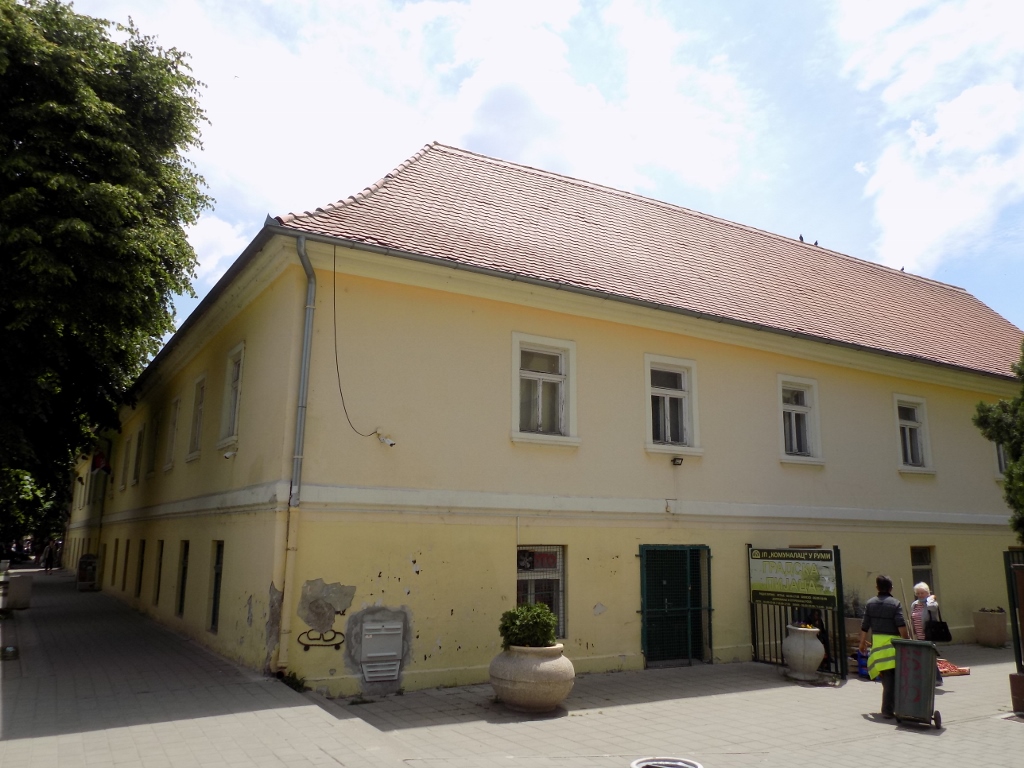 The Ruma County Museum
The Ruma County Museum
Visits to this modest, but interesting museum are free of charge. I really felt sorry that they did not charge for the entrance, but I was told that they did not have the authorisation for something like that. And that was not all – one very kind young woman working there was also my personal guide through the museum and so we started with the visit together.
There is a part where you can see the traditional furniture and accessories of Syrmia homes exhibiting what the museum has managed to collect over time: a formal dining room, a kitchen and a bedroom.
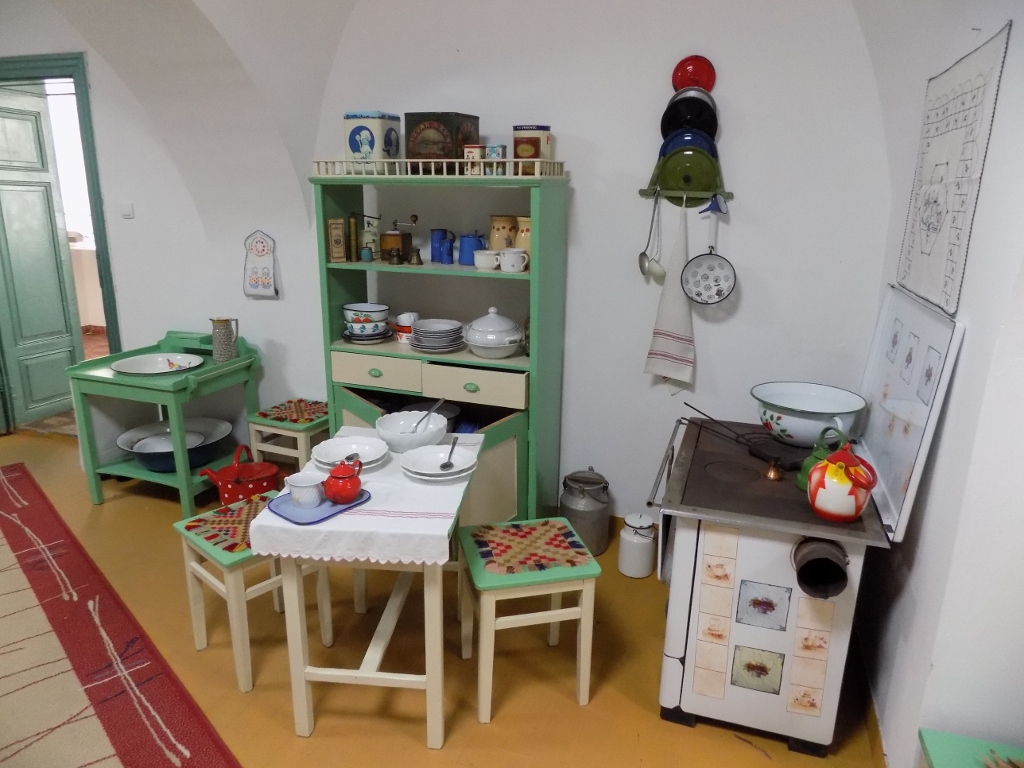 The kitchen
The kitchen
And then we also went to an old-fashioned classroom where I laughed noticing an ancient didactic accessory – the thin wooden rods or twigs! For those who are not familiar with them, they were used as an educational tool for restless pupils.
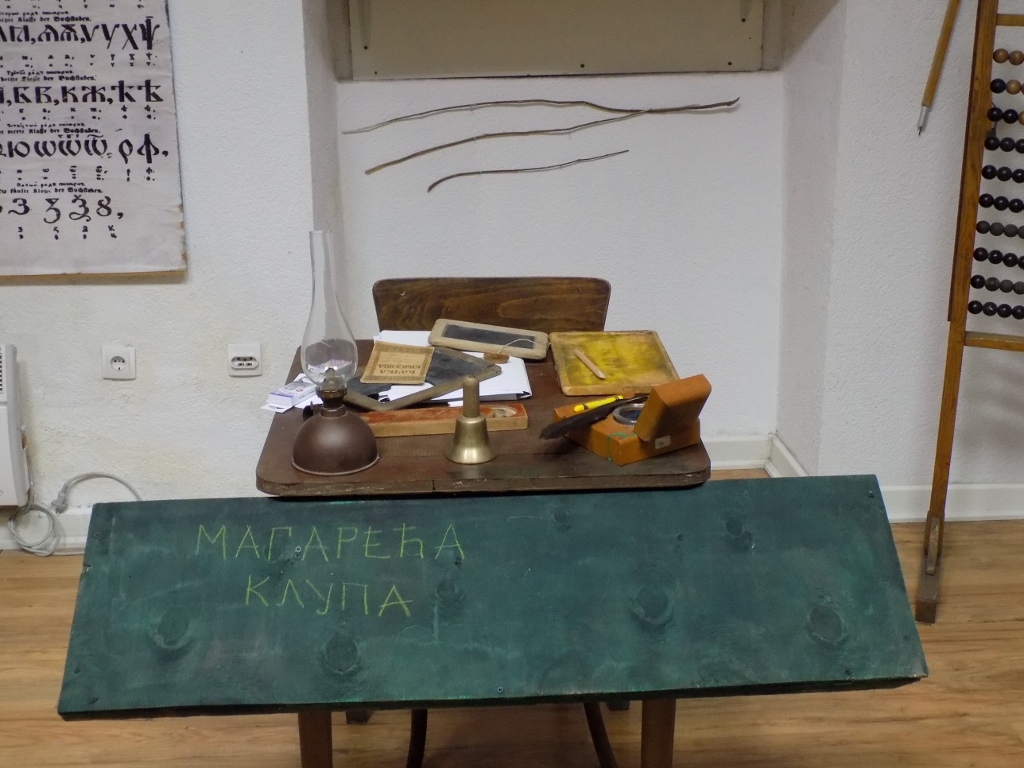 The twigs are exhibited on the wall
The twigs are exhibited on the wall
Although this is a modest museum that can be visited fairly quickly, it contains some very pretty exhibits, such as a closet with nicely arranged embroidered clothes, typical of the Slovaks. It was precisely my guide to this museum who told me that I should have perhaps contacted the tourist organisation of Stara Pazova in order for them to open the birth house of Janko Čmelik which also contains a pretty exhibition of this type.
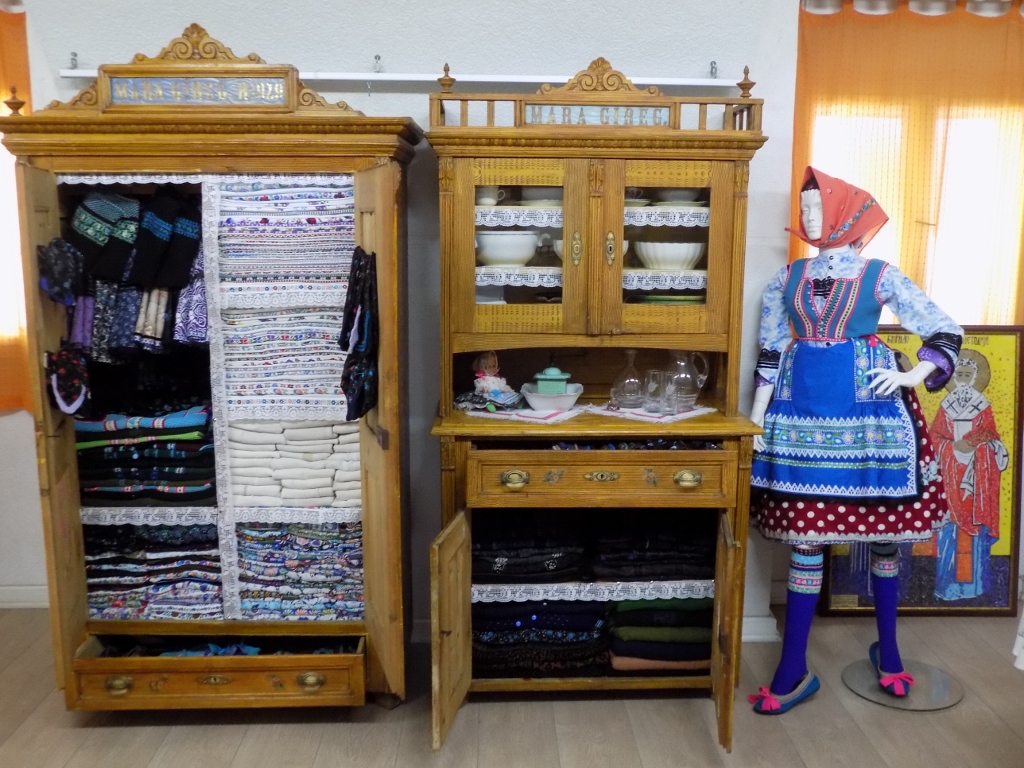 The Ruma County Museum, details
The Ruma County Museum, details
Having thanked my guide, I went to the next big edifice on the same side of the street and that is the Roman Catholic Church of the Exaltation of the Holy Cross.
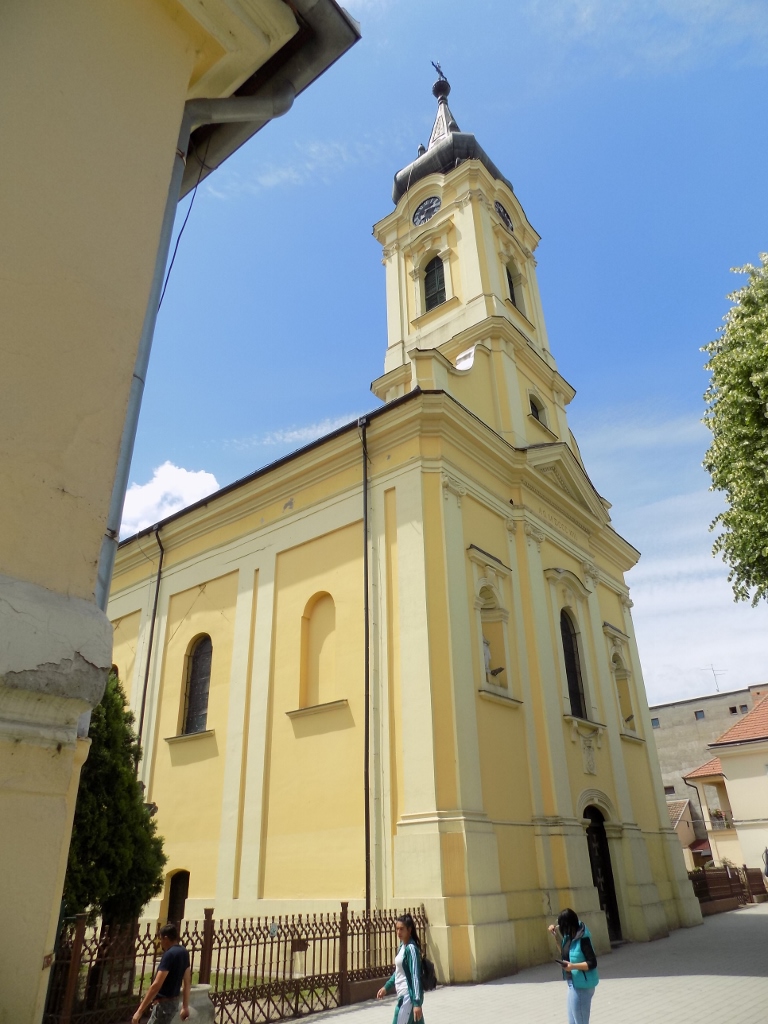 The very corner of the Ruma County Museum and the Roman Catholic Church of the Exaltation of the Holy Cross
The very corner of the Ruma County Museum and the Roman Catholic Church of the Exaltation of the Holy Cross
The church was built in 1813 in the Classicism style that is particularly pronounced on the north facade of the church where the main entrance is.
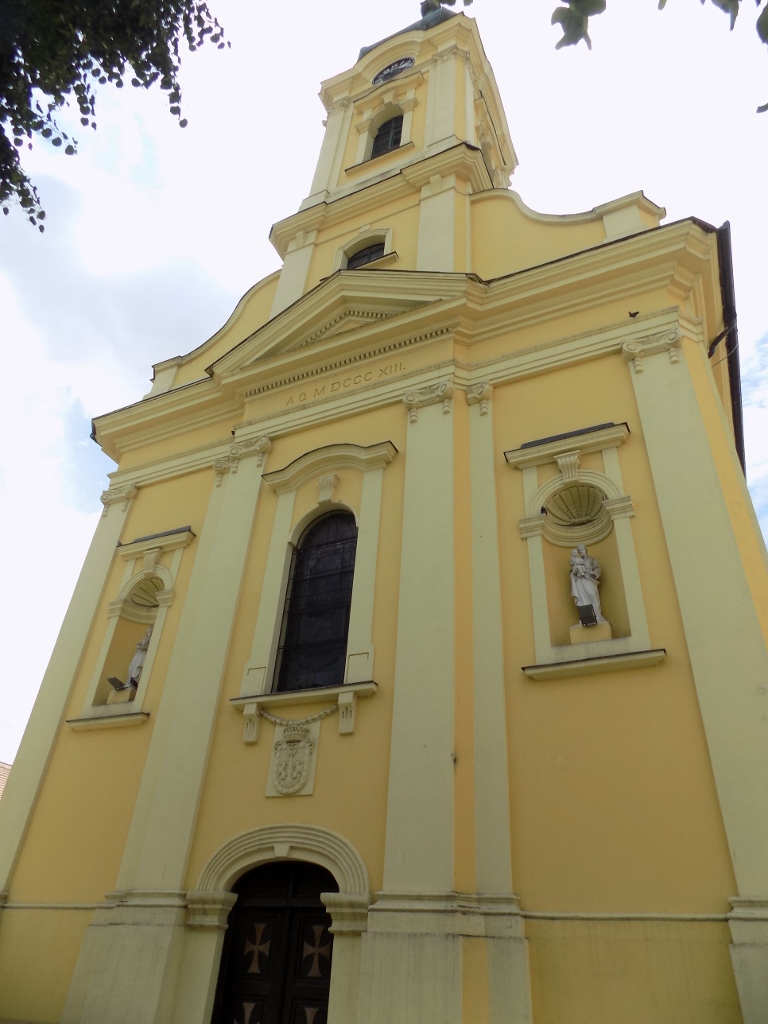 Front facade of the Roman Catholic Church of the Exaltation of the Holy Cross
Front facade of the Roman Catholic Church of the Exaltation of the Holy Cross
Here I came across a verger who was getting ready to lock up the church (this actually happened to me during this trip unusually often), but I asked him to let me in for a short while, which he very kindly did. The entrance was through the courtyard and a spacious sacristy that is located on the west side.
The depiction of the Exaltation of the Holy Cross seen in the main altar was painted in 1828.
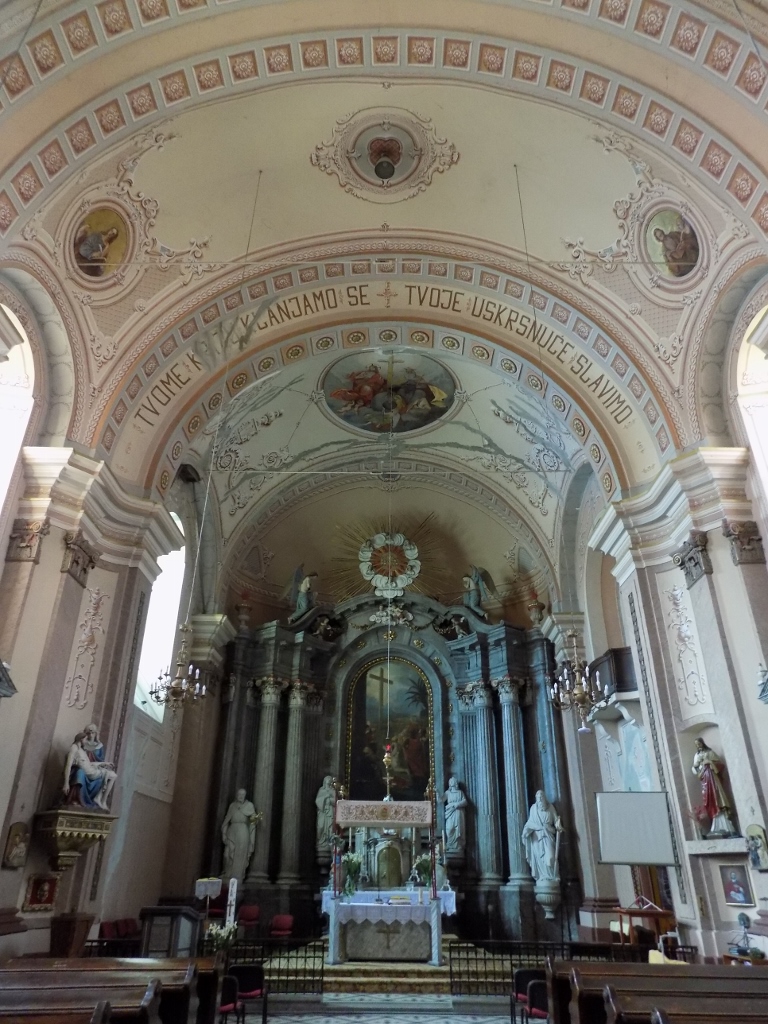 Main altar space of the Roman Catholic Church of the Exaltation of the Holy Cross
Main altar space of the Roman Catholic Church of the Exaltation of the Holy Cross
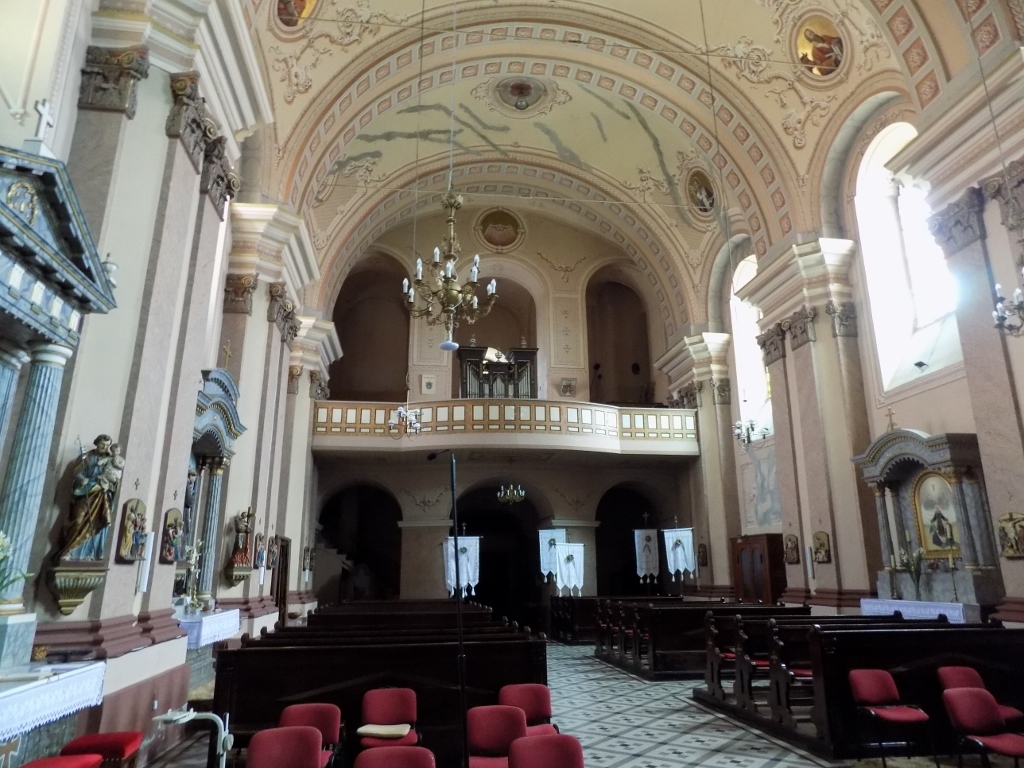 Roman Catholic Church of the Exaltation of the Holy Cross, the interior
Roman Catholic Church of the Exaltation of the Holy Cross, the interior
Among other details, the church is decorated by beautify stained glass windows.
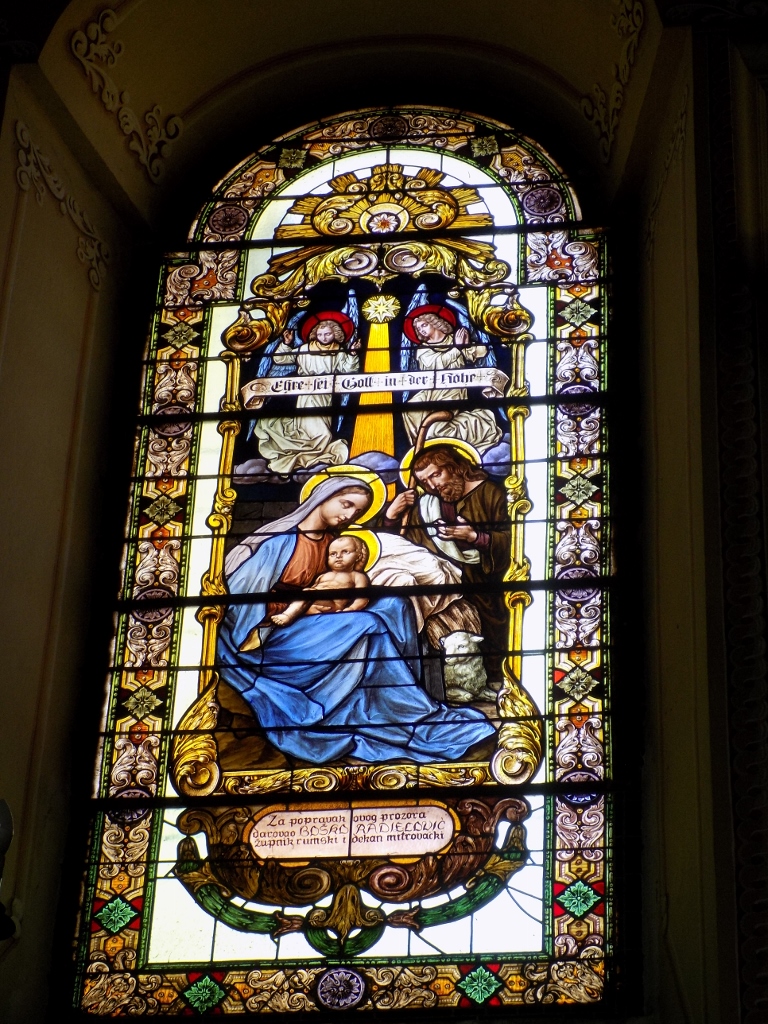 Roman Catholic Church of the Exaltation of the Holy Cross, a stained glass window
Roman Catholic Church of the Exaltation of the Holy Cross, a stained glass window
After the visit to this church I was ready for a break. For this purpose I walked to the nearby Town’s Square (Gradski trg) where there are several restaurants/cafés and so I took up a seat there and had a lovely coffee. Cafés, restaurants and pastry/ice-cream parlours may be found in other parts of the town, too, but I came here also in order to visit a landmark situated in the square and this is the Monument to Revolution that is a reference to WWII.
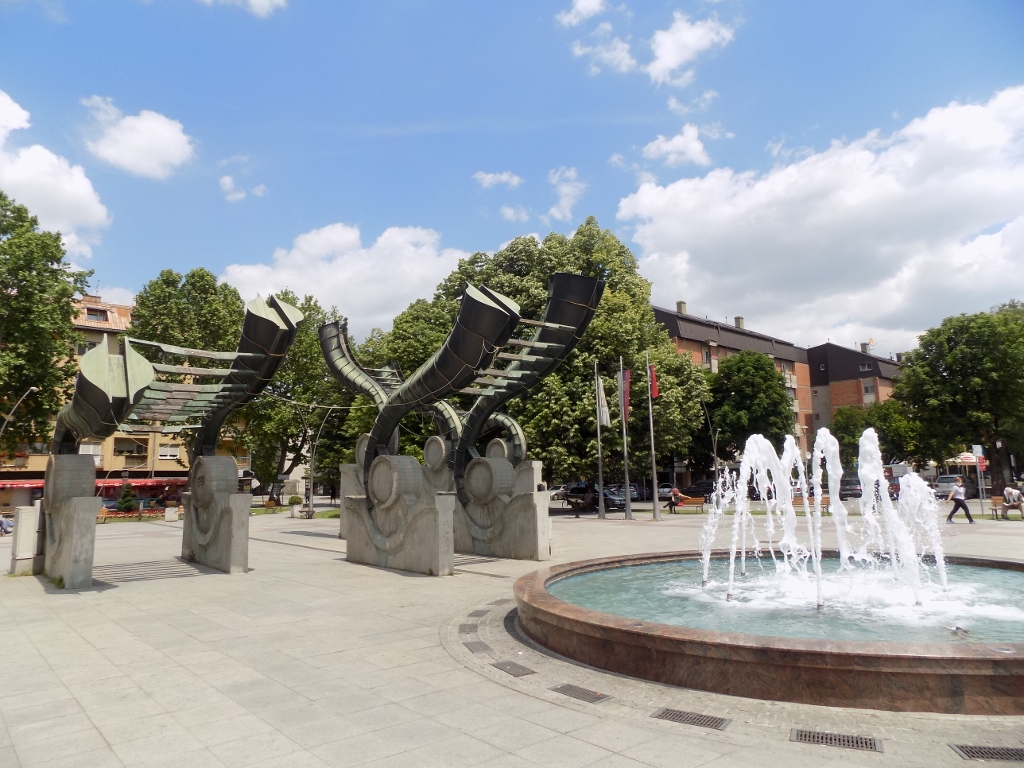 Monument to Revolution and a fountain in the Town’s Square
Monument to Revolution and a fountain in the Town’s Square
The monument was erected in 1976 and it consists of seven metal forms that are reminiscent of trumpets and that symbolise seven people’s liberation brigades from Vojvodina. The trumpets were used here in their capacity of a symbol for calling for rebellion and charge.
Since I had quite a nice rest, I went for a rather casual walk along the main street in Ruma. I actually wanted to go to a house that I had noticed a while ago when my work took me through Ruma (on the corner of Glavna and Vladimira Nazora streets). I could not find any data about whose house this is, although it appears completely abandoned, but even in a very ruined state and completely neglected, it seems very impressive to me.
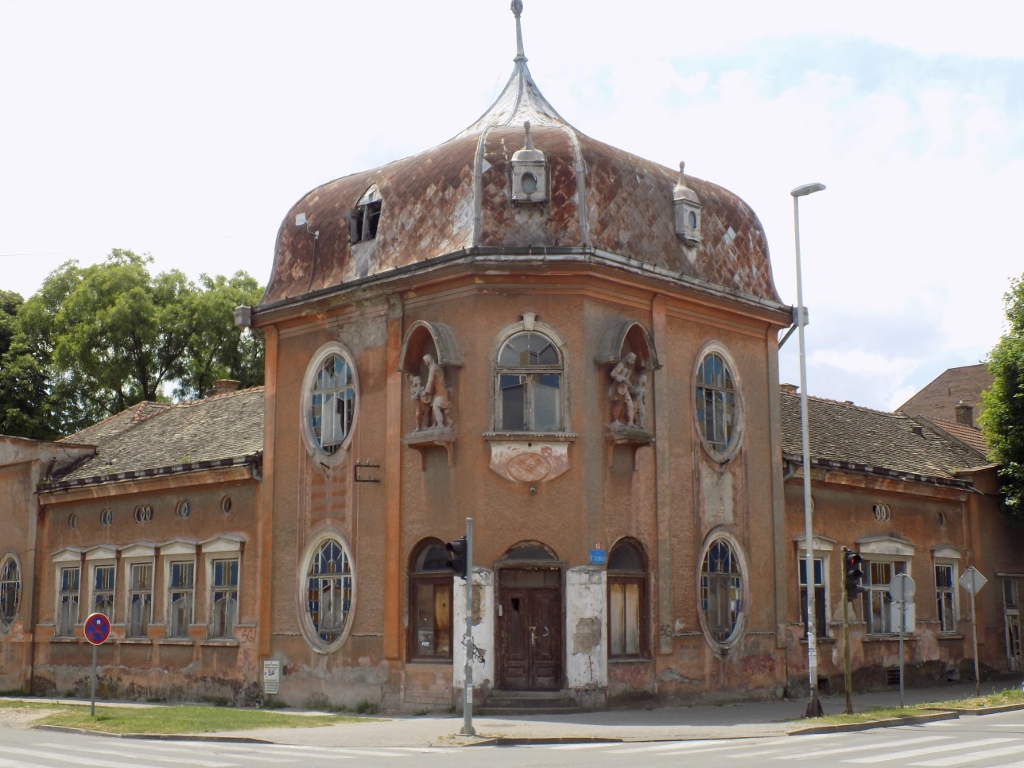 An unknown house in Ruma
An unknown house in Ruma
Look at these details and imagine if this were upgraded...
 An unknown house in Ruma, details
An unknown house in Ruma, details
There are many other nice buildings in the main street of Ruma (Glavna) that are in a much better state. Although the green treetops certainly decorate the space, in some parts they also hinder the view at some of the buildings.
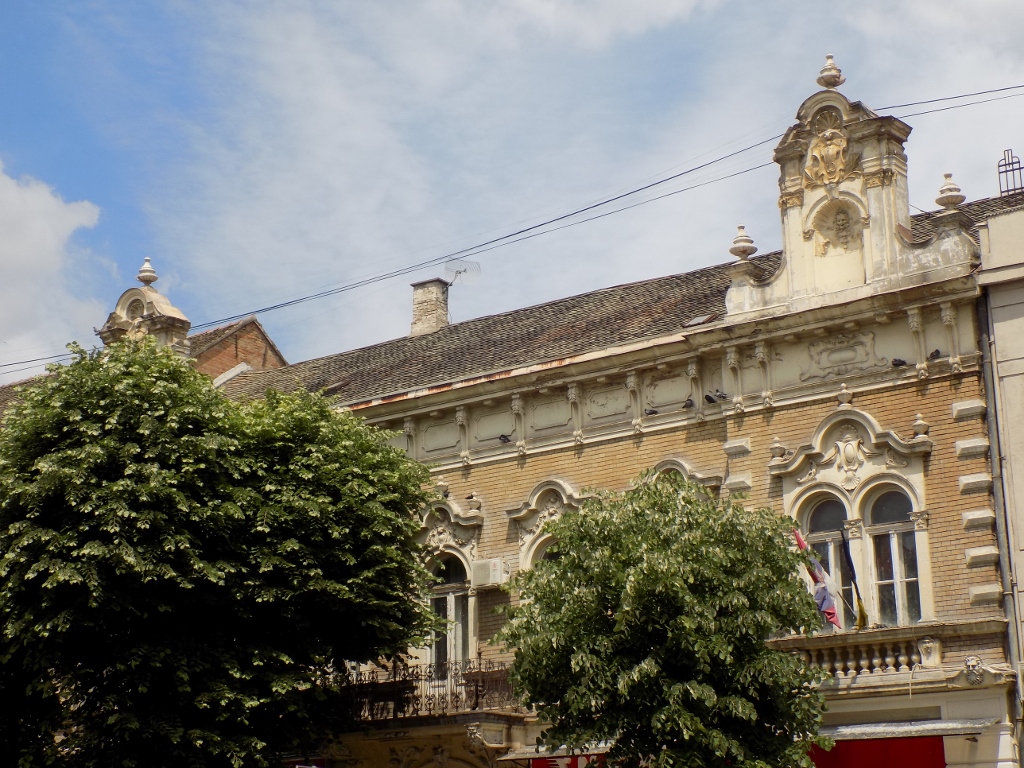 An edifice in Ruma
An edifice in Ruma
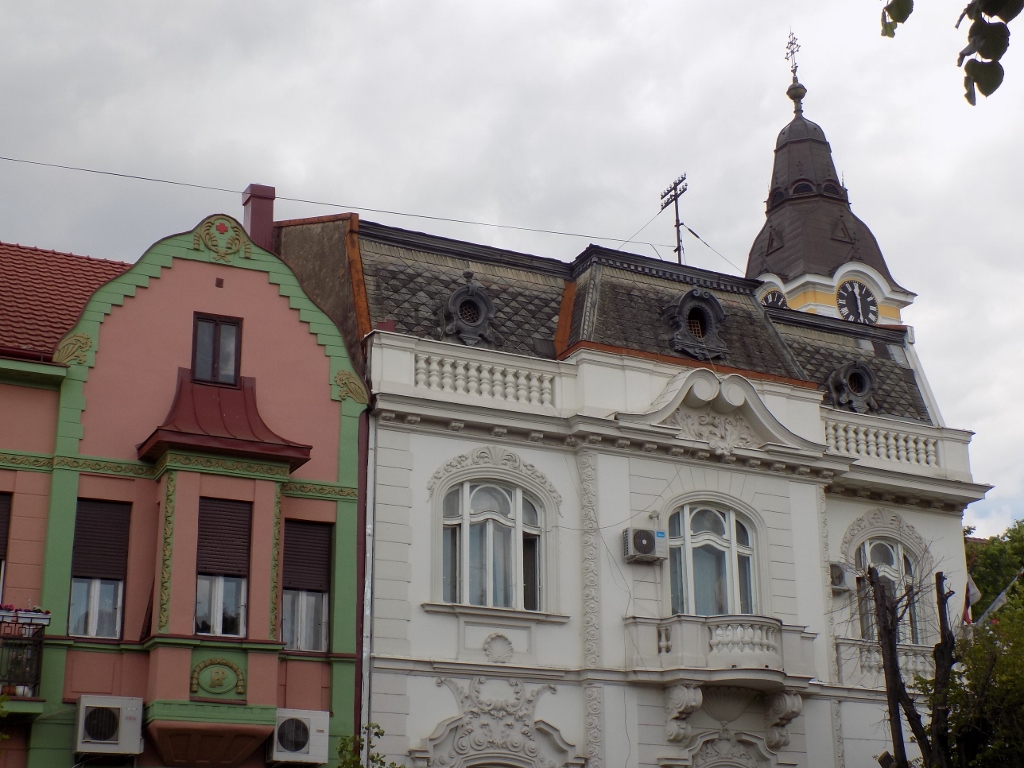 Buildings in Ruma
Buildings in Ruma
Here I also decided to go and get my car that was already washed and head back to the hotel. The reason was that I had several hours of using the spa centre included into the price of the hotel room, plus I had already booked a massage appointment. I did all of this nicely and spent the rest of the time using the same pattern of the previous day: early dinner, walk to Borkovačko Lake and then going to bed early.
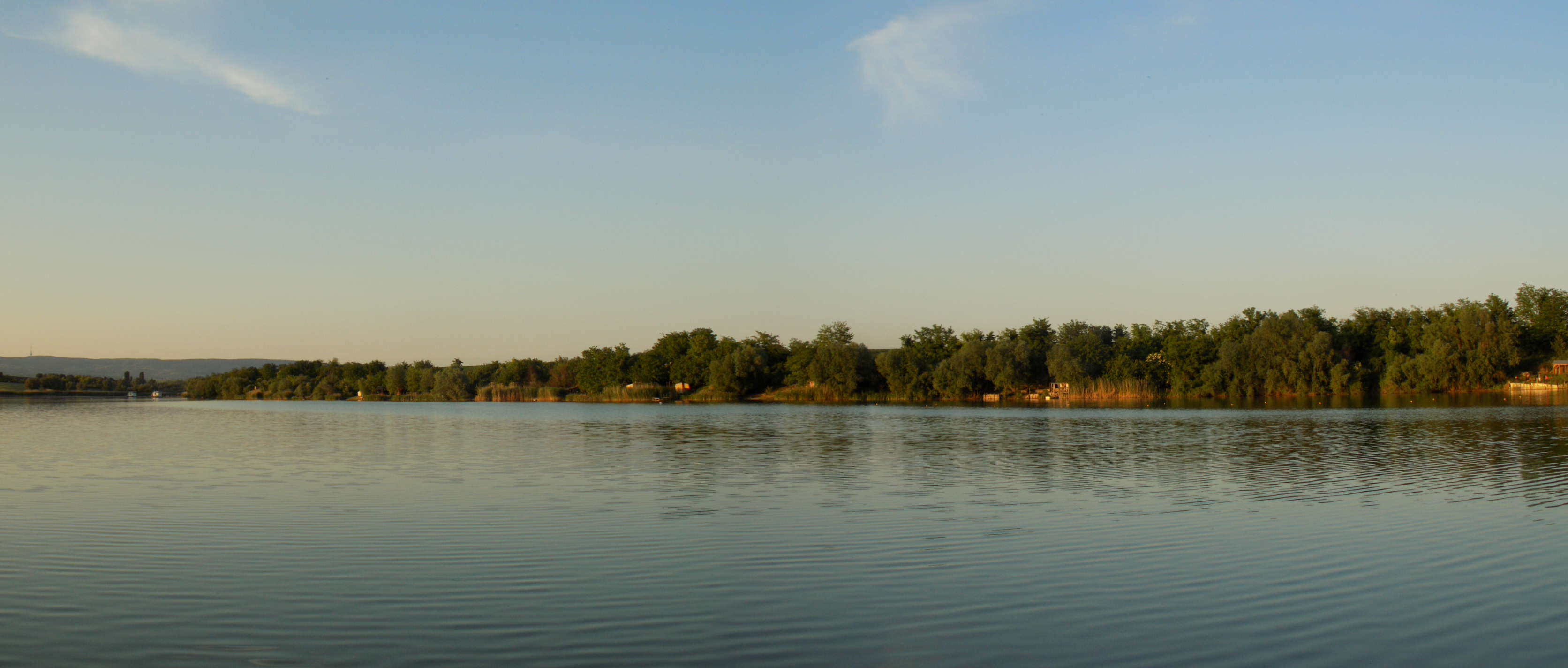
While I was walking back from the lake to the hotel, I came (again) across some field poppies lit by the last rays of sunshine of the day. Just look at them. Can one resist and not admire them?
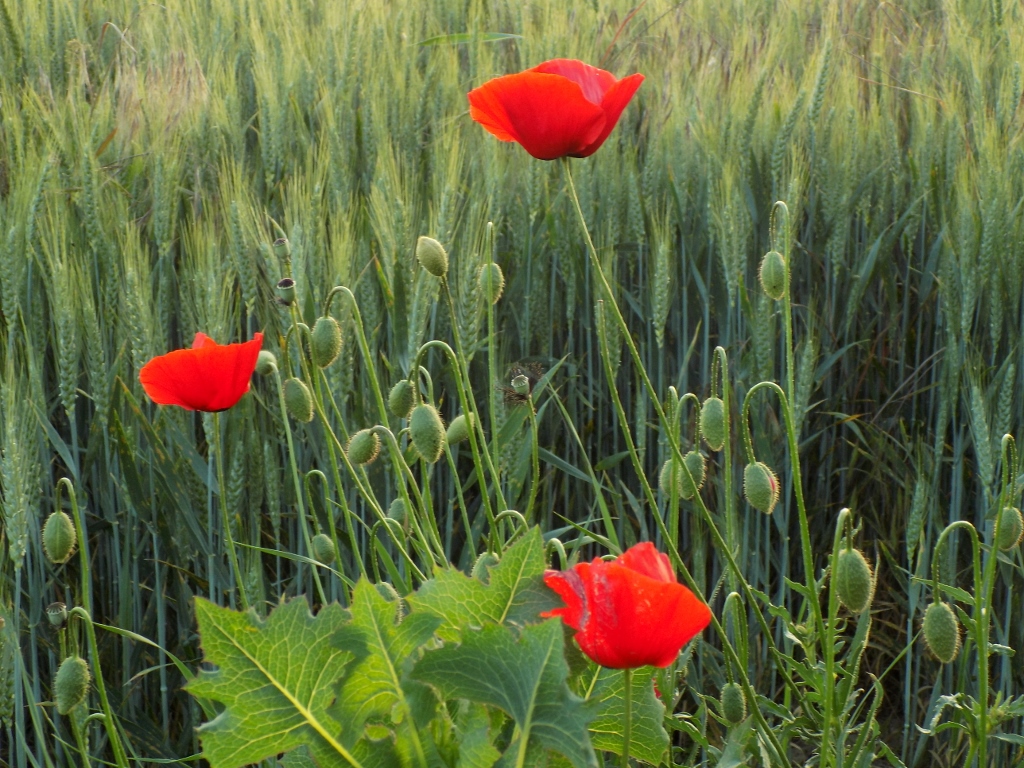 Field poppies at the end of the day
Field poppies at the end of the day
The next morning I repeated again the same sequence of the activities of the day before: coffee on the hotel’s terrace, a nice walk and enjoyment and then return to the hotel for breakfast. As for the photographs, it all started from a resident of the canal that from time to time drains the water from the artificial Borkovačko Lake.
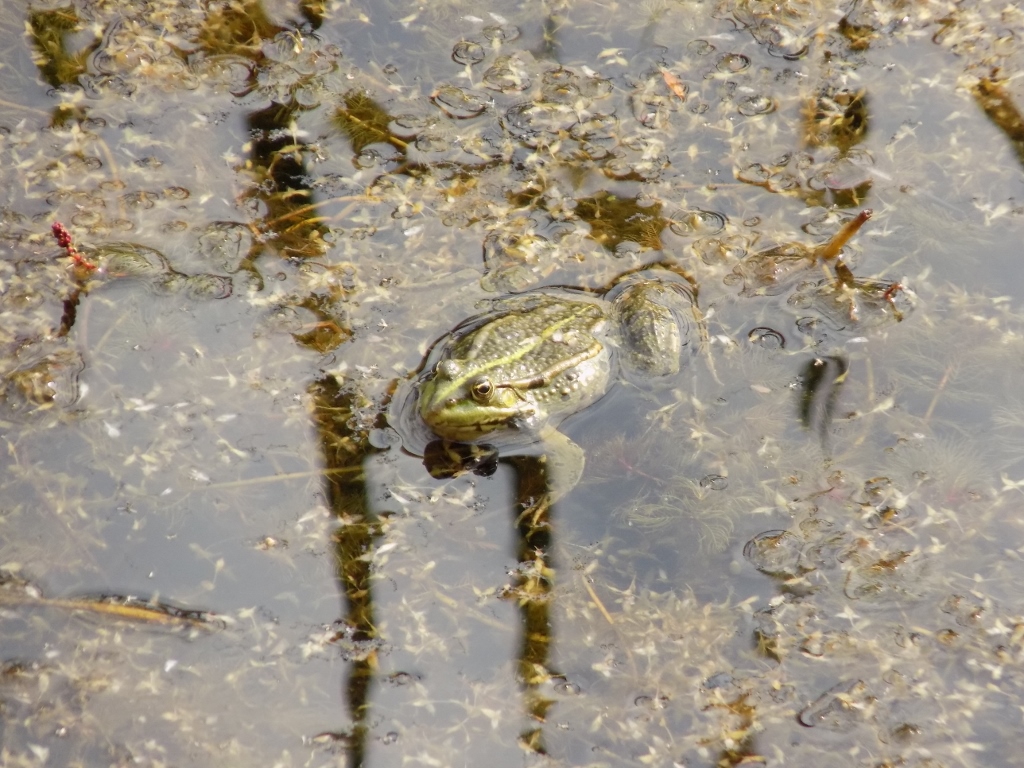 One of the numerous residents of the left-over water in the canal
One of the numerous residents of the left-over water in the canal
With its perfectly still surface, the lake was stunning once again.
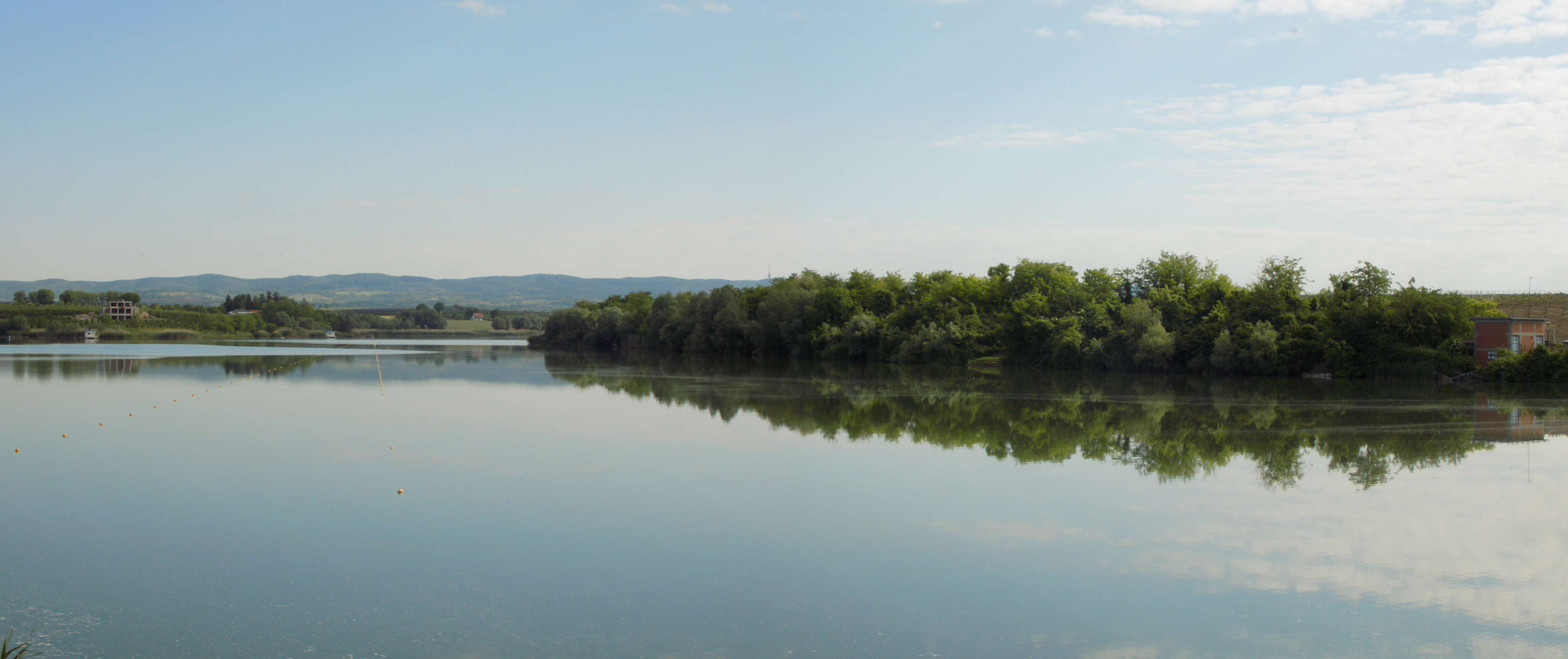
Still, this time I decided not to go for a walk around the lake, but rather I preferred to go again to see those bee-eaters, so I headed for the same place where I had seen them the day before. Although they occasionally landed on the overhead power lines closer to the place from which I watched them, they were still sufficiently far away that I could not get a better photo of them.
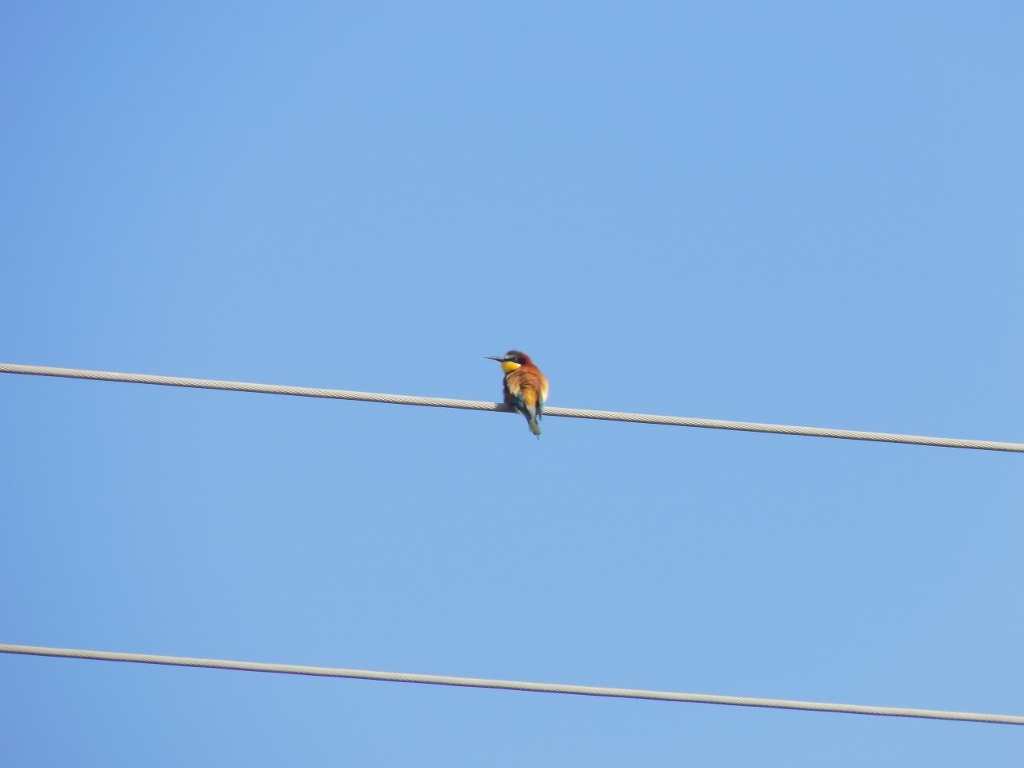 Bee-eater
Bee-eater
Also, when I took a photo of a couple of bee-eaters I realised that one of them was holding a fresh catch in its beak.
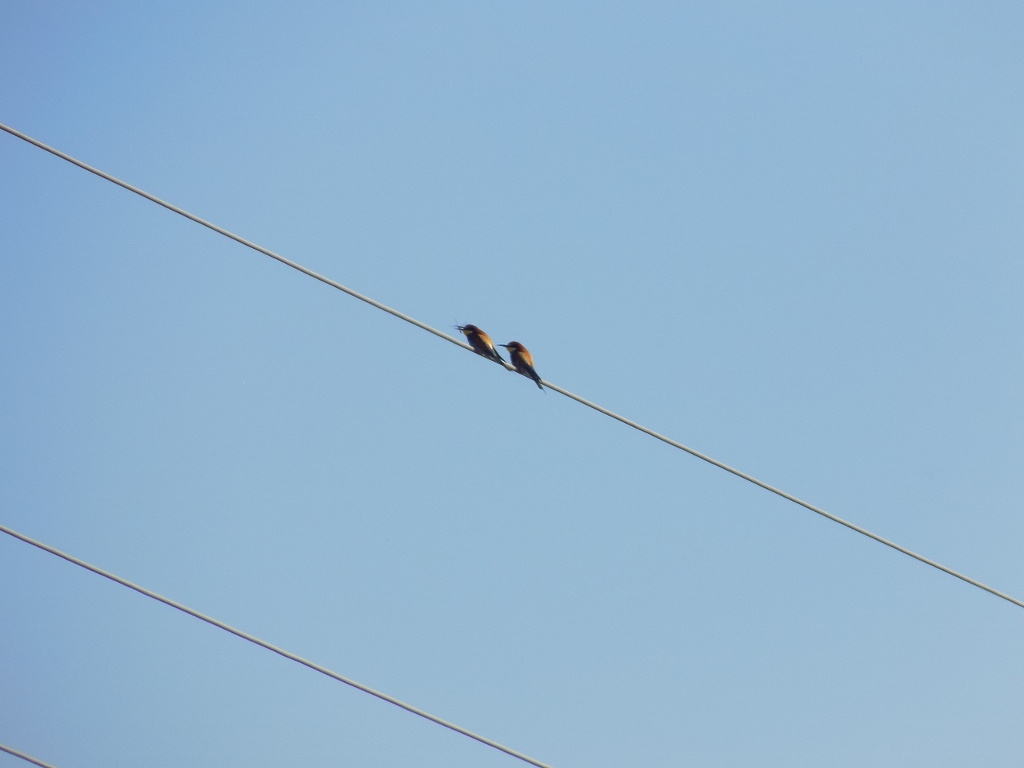 Bee-eaters and the catch in the beak of the bird on the left-hand side
Bee-eaters and the catch in the beak of the bird on the left-hand side
After some time spent watching the birds, I started to return to the hotel following the same way. It was still early in the morning and the colours were specifically intense.
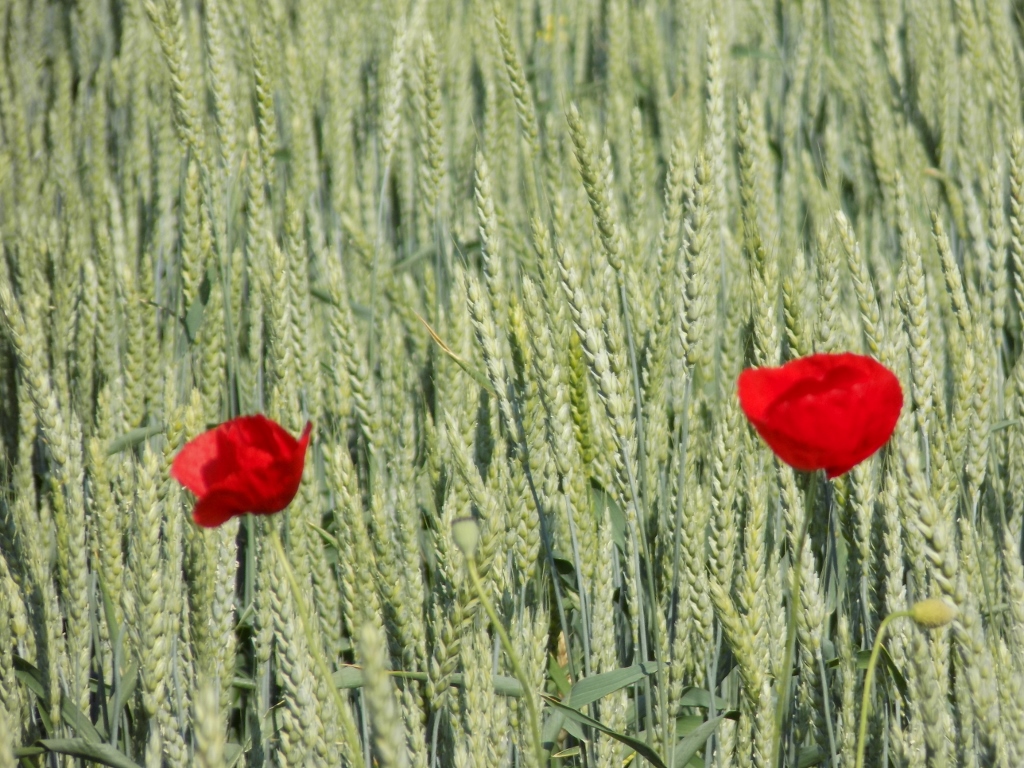 Field poppies in a wheat field
Field poppies in a wheat field
I also noticed a painted lady which like the bee-eaters enjoyed the breakfast in its own way.
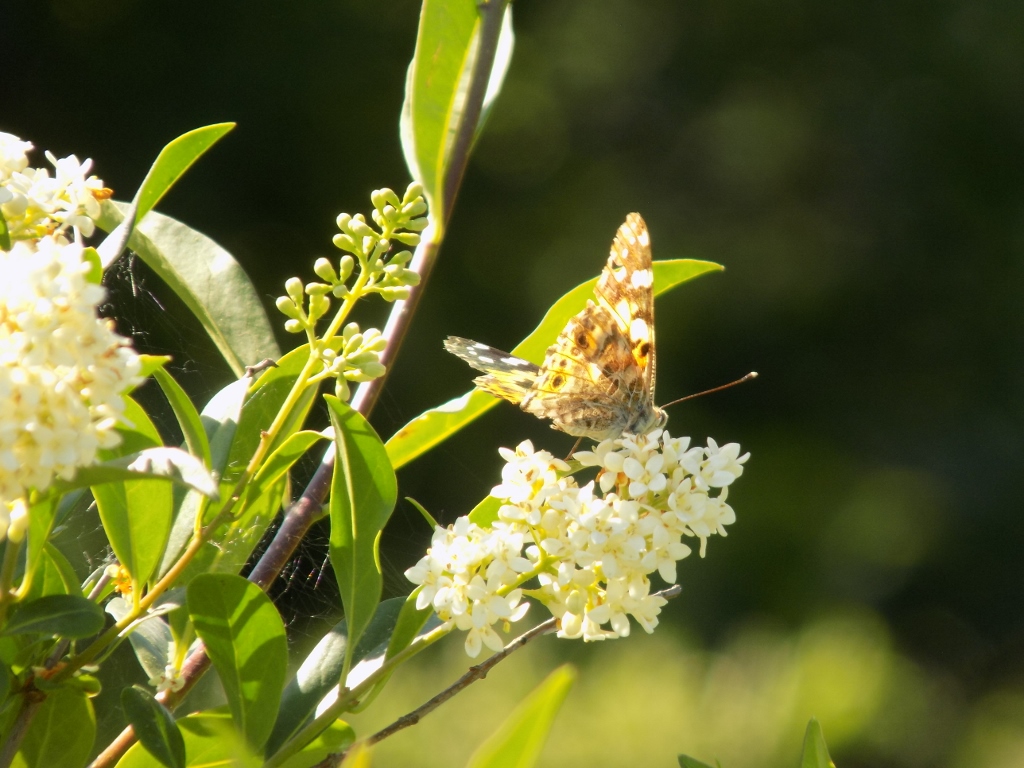 The painted lady is also having a breakfast
The painted lady is also having a breakfast
I got the message loud and clear and so I directly went back to the hotel where I also enjoyed my own breakfast. Afterwards, I packed up, paid my hotel bill and continued with the trip by car.
This morning I decided to visit another couple of interesting places in Ruma. I could have done this the day before, but as I was in no hurry, I decided to leave the final part of the sightseeing of this small town in Syrmia for the last day.
First I drove to the Church of the Ascension. This is an immobile cultural property of great importance. The church was built in 1761 and it is dedicated to the Ascension of the Lord, that is, to the feast celebrated on the 40th day after the resurrection.
As I entered the churchyard I could see that the main door was open, so I first entered the church. The tall altar partition consists of an opulently decorated woodcarving and a larger number of icons that date back to 1772.
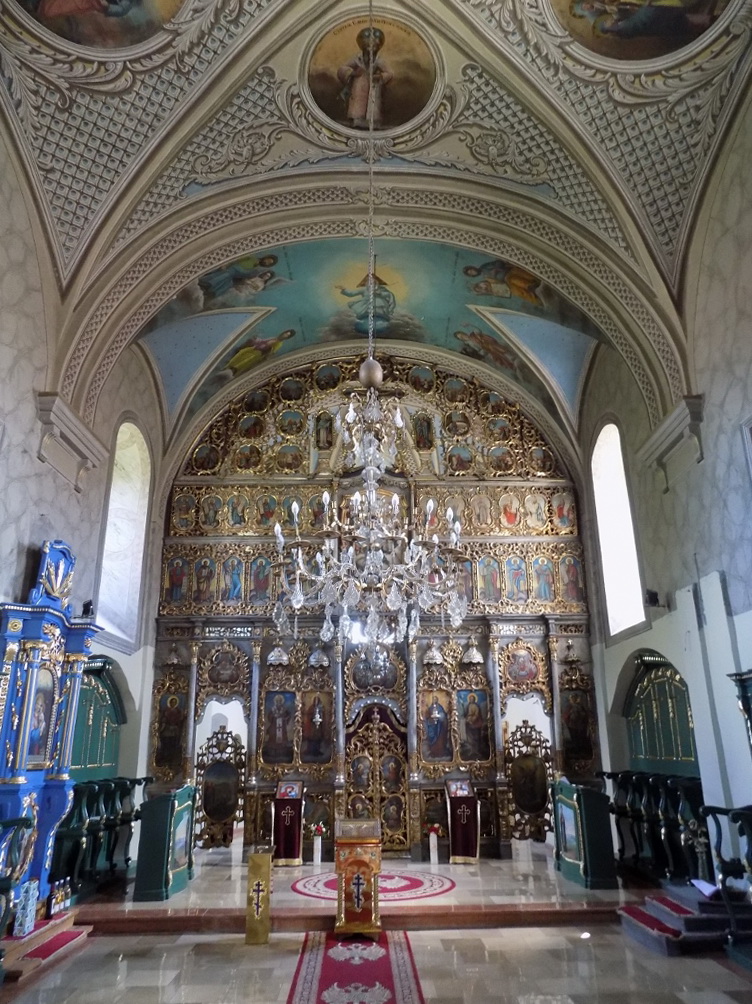 Church of the Ascension, the interior
Church of the Ascension, the interior
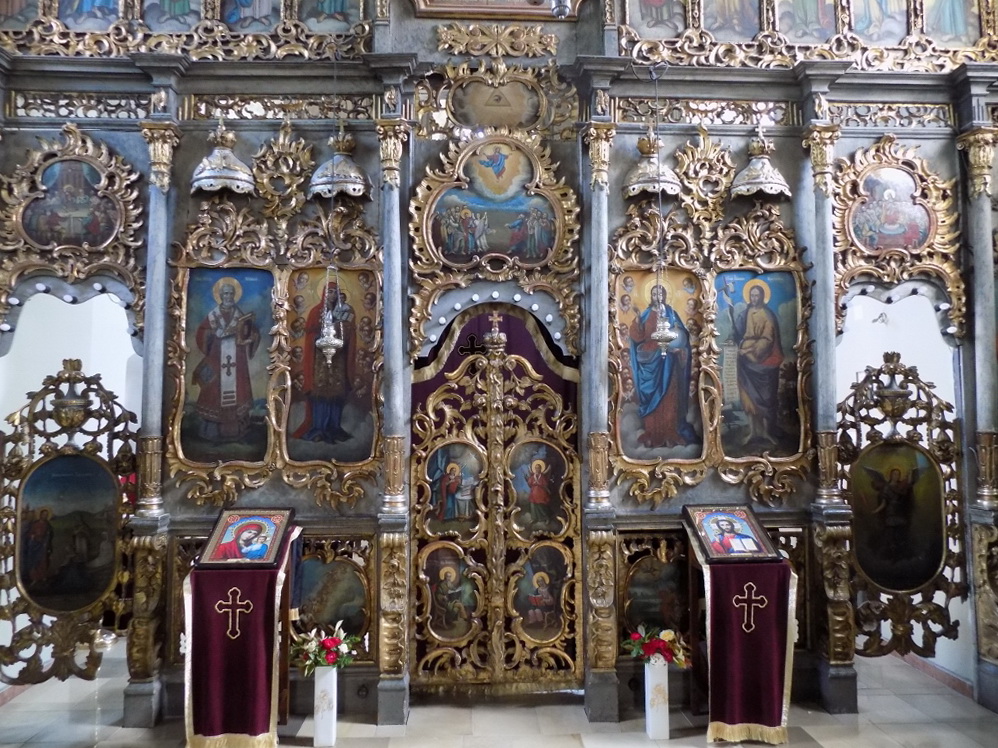 Church of the Ascension, iconostasis details
Church of the Ascension, iconostasis details
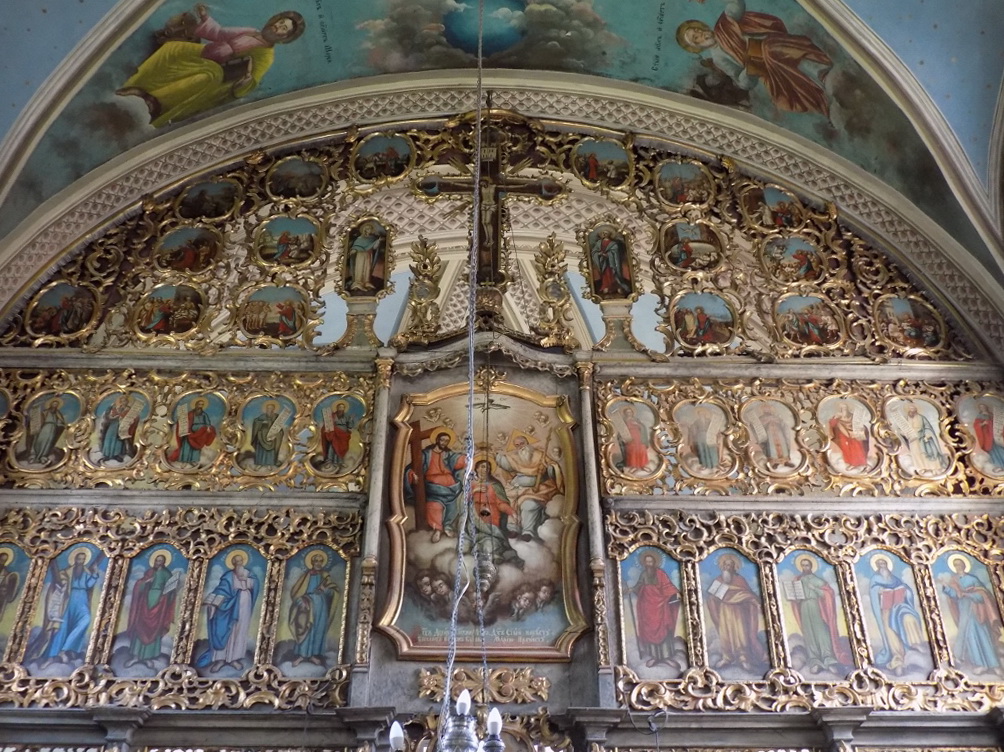 Church of the Ascension, iconostasis details
Church of the Ascension, iconostasis details
Having visited the interior part of the church, I went on making a circle around the church from the outside.
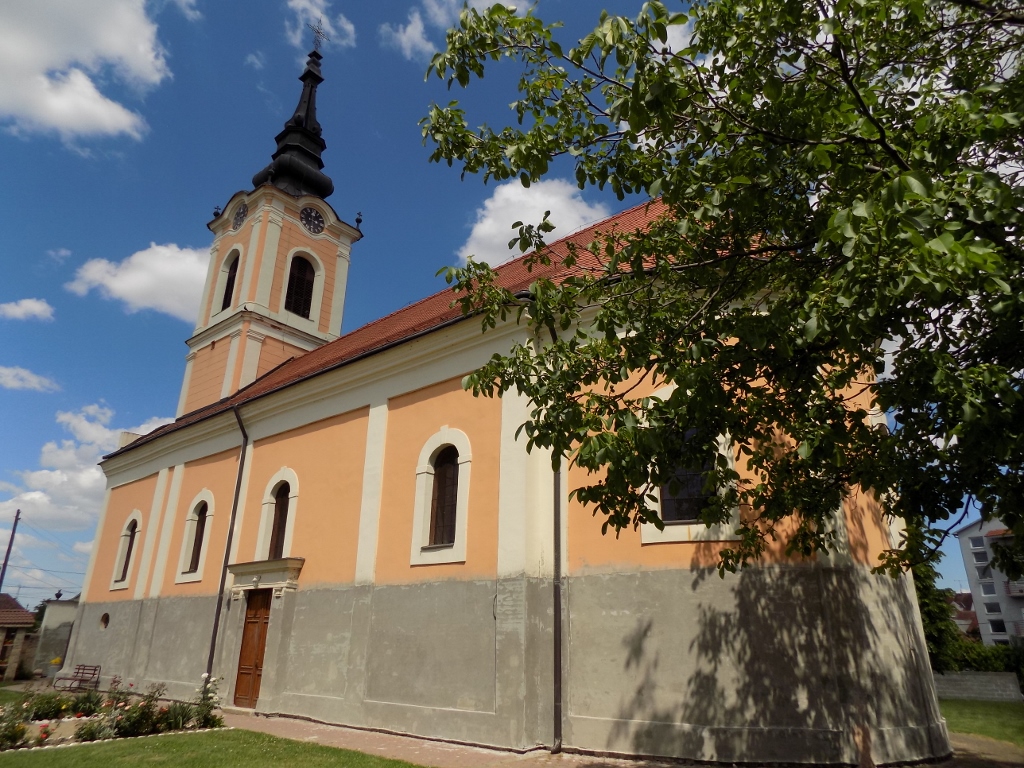 Church of the Ascension in Ruma
Church of the Ascension in Ruma
The yard of the church is interesting since there used to be several tombstones transferred into the churchyard from a nearby cemetery when the town expanded and the space was needed for the houses of the living inhabitants. Nowadays, there are no tombstones in the courtyard, but I did notice two such stones built into the facade of the church. One may be discerned in the shadow of the tree in the photo above, i.e., on the east side of the church, while another one is situated on the north side of the church and may be seen in the following photo.
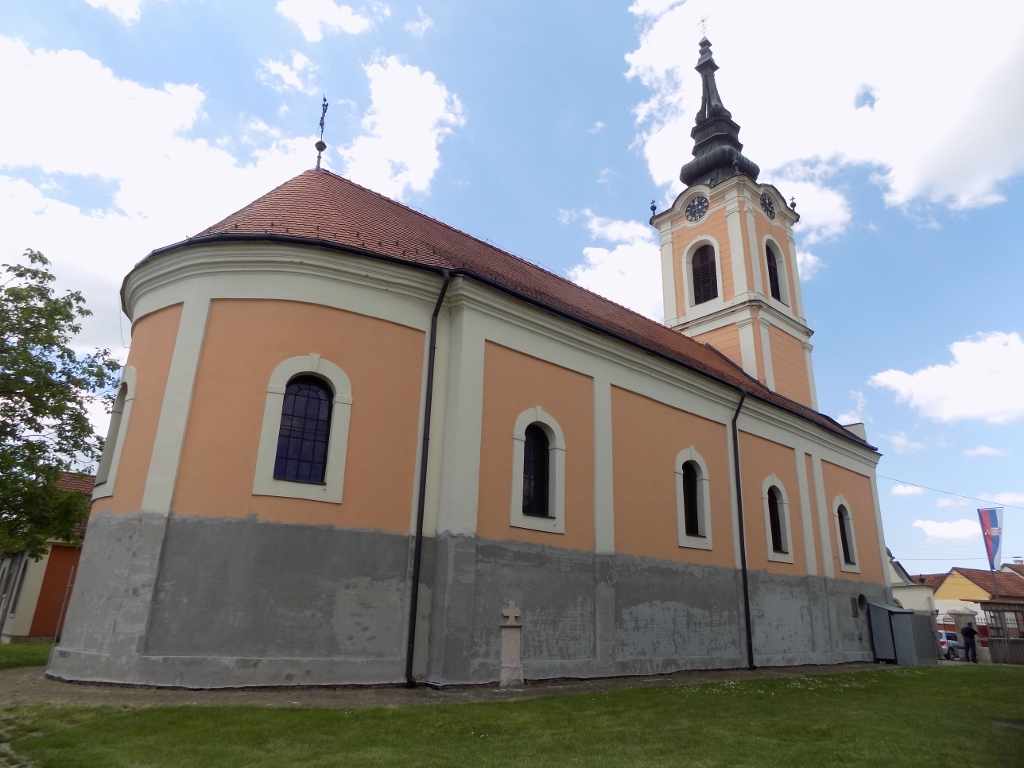 Church of the Ascension in Ruma
Church of the Ascension in Ruma
Then I drove to the not too distant town’s cemetery, for there is a landmark there. This is the Kalvarija complex (the Calvary Complex) in the Roman Catholic cemetery in Ruma that consists of a chapel (built at the end of the 19th century) and the accompanying structures built in 1912. The chapel is in a rather decayed state.
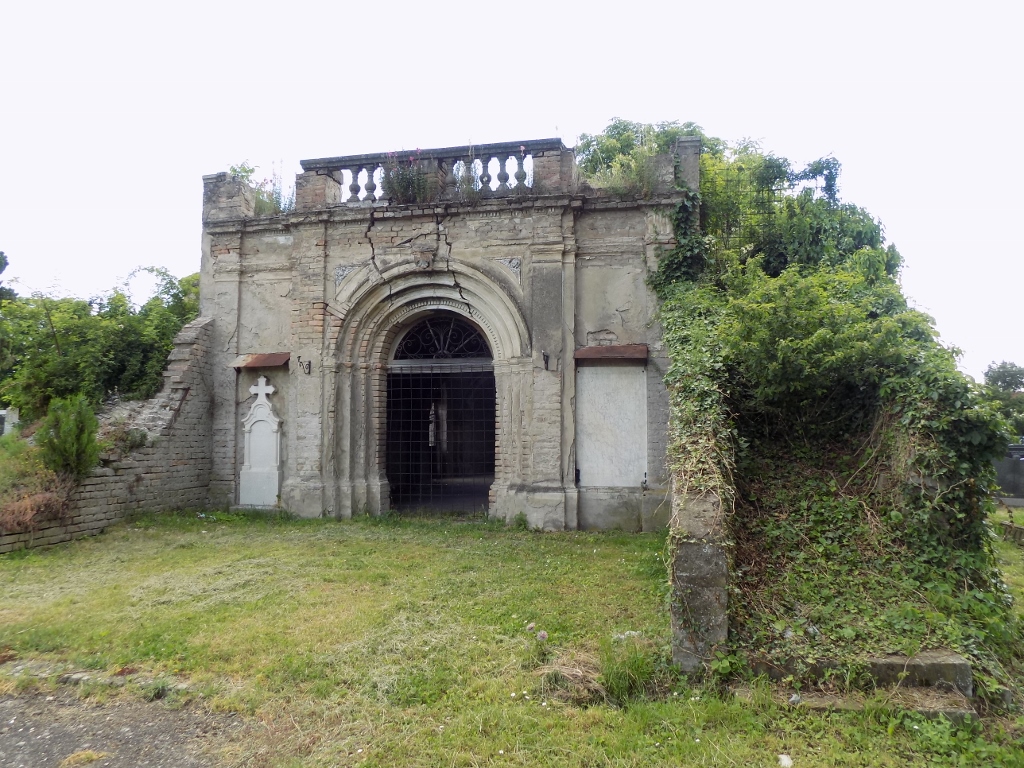 The Kalvarija complex in Ruma
The Kalvarija complex in Ruma
Despite the poor state of this complex, it is still one of the rare well preserved monuments of this kind on the territory of Syrmia and for this reason it has been declared a landmark. I peered in through the metal-rod gate and this is what the chapel looks like inside.
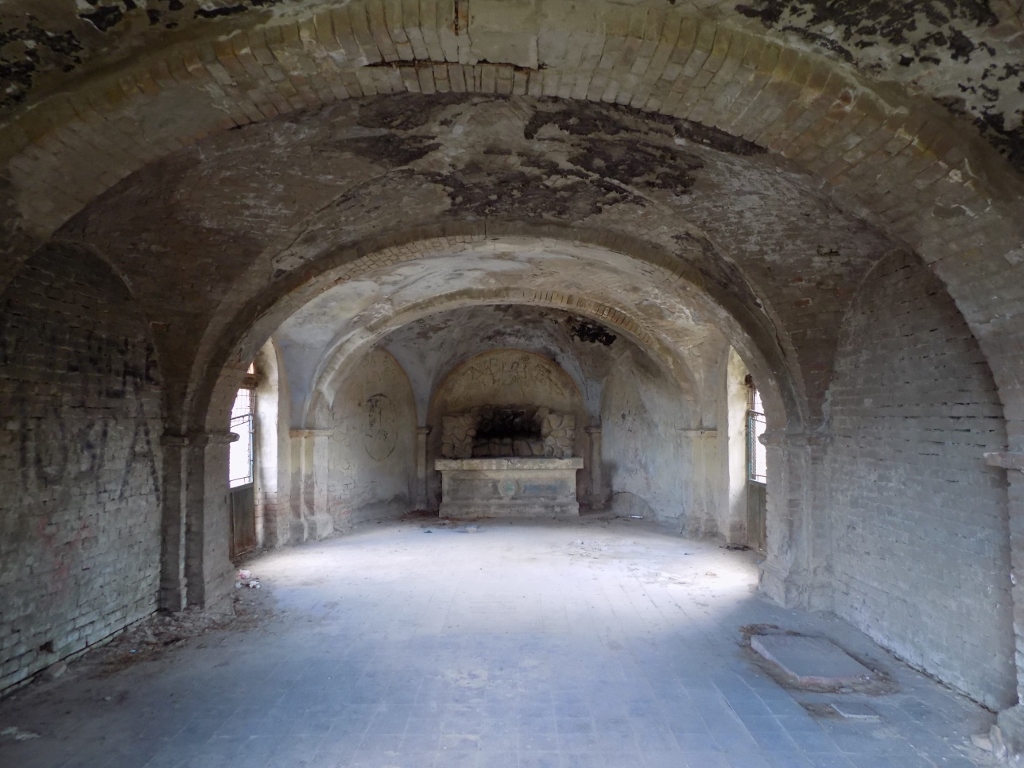 The Kalvarija complex in Ruma
The Kalvarija complex in Ruma
With this I actually completed my sightseeing of Ruma, but not the sightseeing of this part of Syrmia. So, I drove to village Voganj (Вогањ) located some 5 km westwards. The main and the only thing I was interested in there was the Church of St. Nicholas that is classified as the monument of culture.
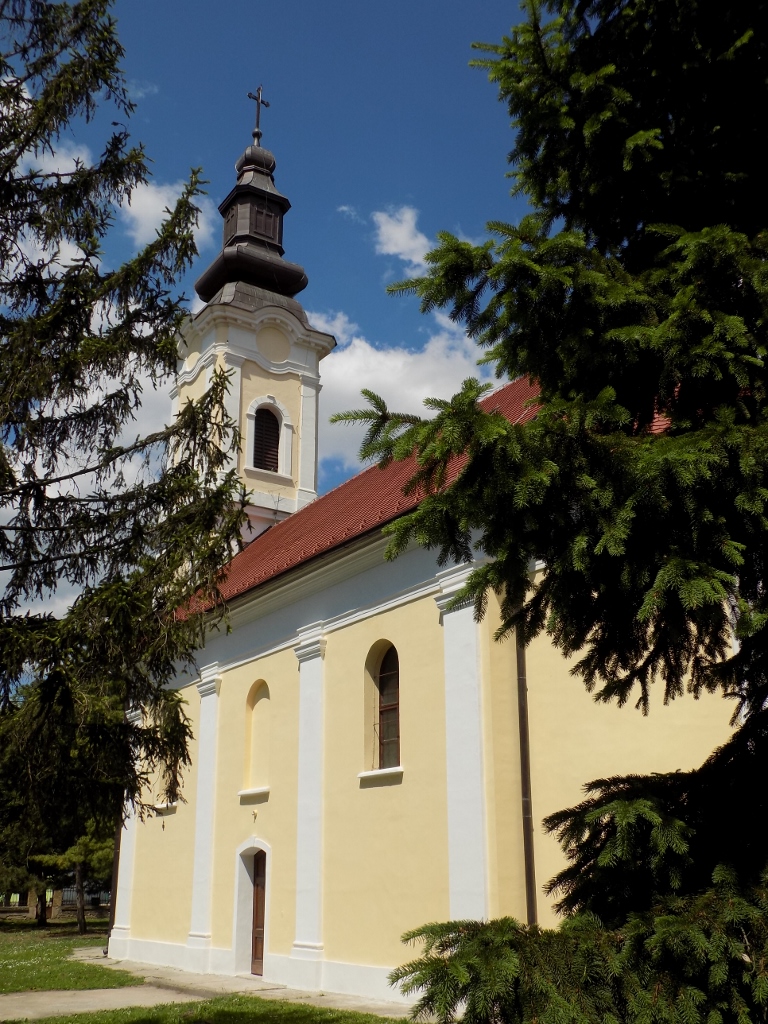 Church of St. Nicholas in Voganj
Church of St. Nicholas in Voganj
The church was built around the middle of the 18th century and it follows the usual ground plan for this type of baroque buildings: the naos consists of a single nave, in the east there is a semi-circular altar apse, while on the west side there is a multi-floor bell tower of the square ground plan that is narrower than the width of the nave.
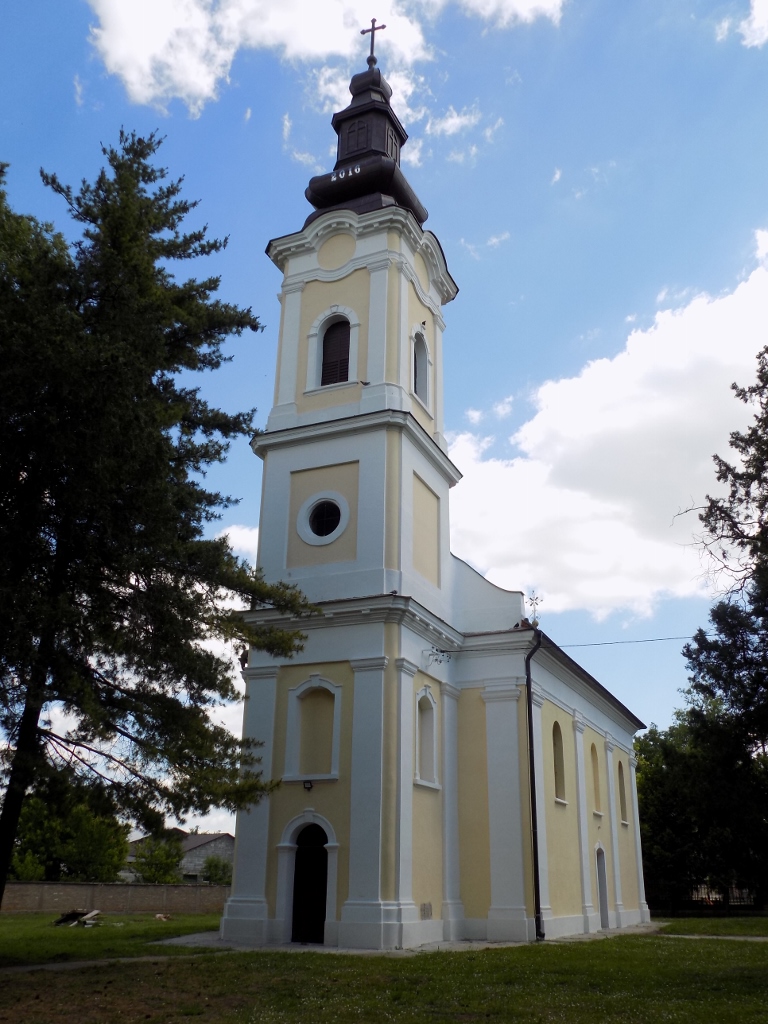 Church of St. Nicholas in Voganj
Church of St. Nicholas in Voganj
Here, however, I did not have the luck and everything was locked up. The church itself appeared restored, but the fence seemed rather shabby, so I wondered if the church “worked” at all. I noticed that beside the churchyard there was a local administration office and a post office, so I wanted to inquire, but these were closed, too, which made me wonder if it was some kind of a holiday. Still, this was probably all about the fact that I was not familiar with the “opening hours” of these important local institutions.
What is one to do...? I got into my car, drove back towards Ruma and then headed north in the direction of village Stejanovci. As it can be seen in the following photo, apart from me there was hardly anybody else on the road. It was all so empty that I did not feel the need, even only for politeness sake, to park a little to the side.
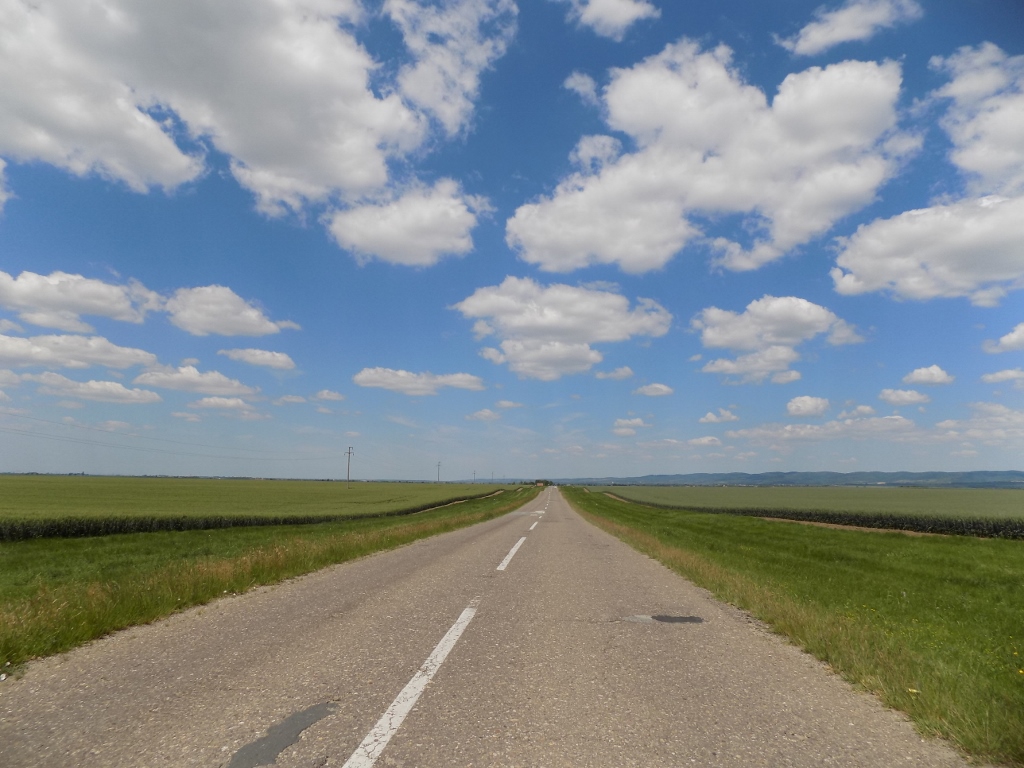 Flat Syrmia
Flat Syrmia
Although for the most part Syrmia is one big plain, in this part the elevation of Fruška Gora mountain starts and so the ground also waves a little thus only accentuating even more the patches with field poppies that I enjoyed (yet again) so intensively.
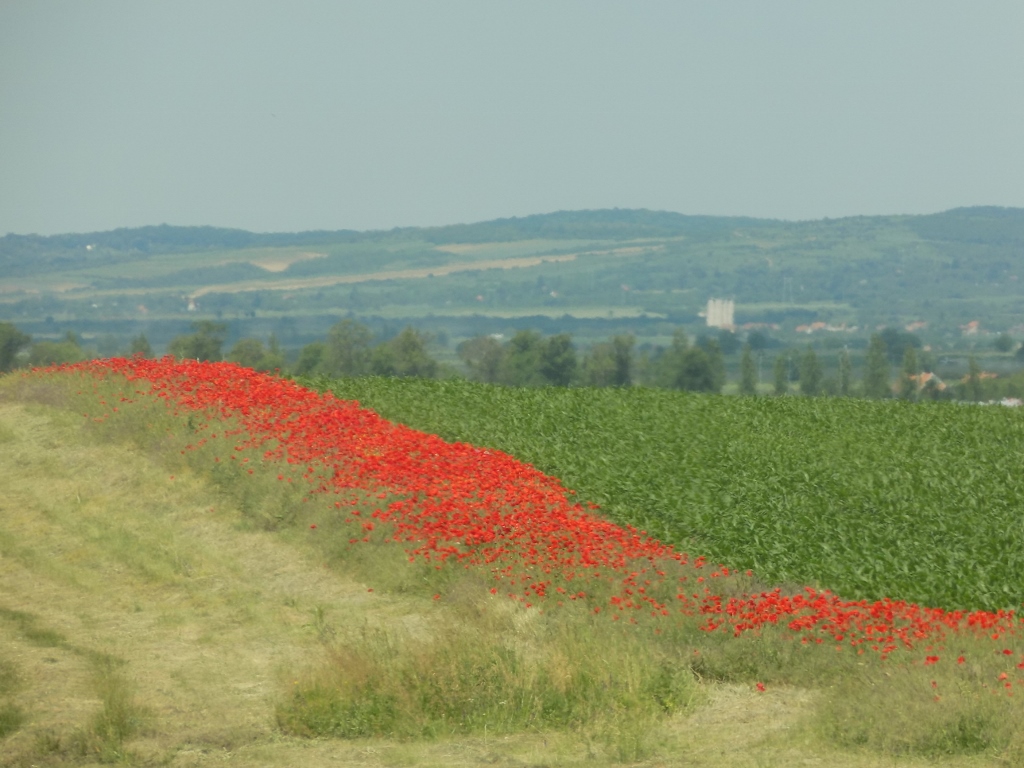 Wavy Syrmia and field poppies
Wavy Syrmia and field poppies
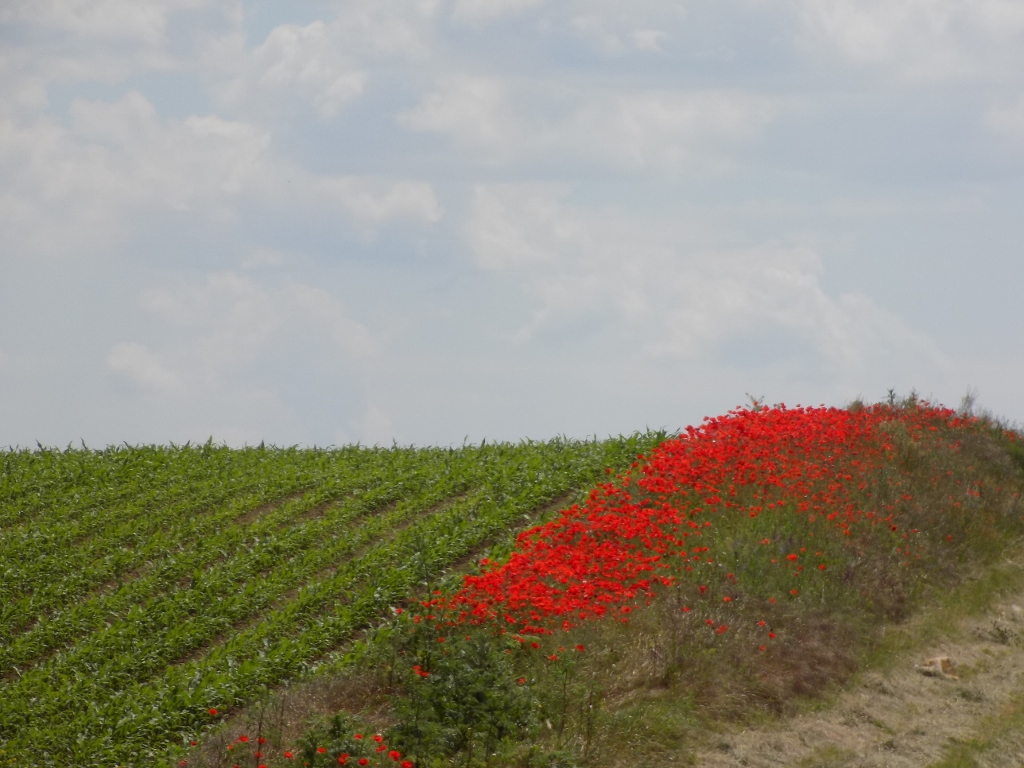 Wavy Syrmia and field poppies
Wavy Syrmia and field poppies
This waving of the ground was also noticeable when I approached another landmark in the middle of the road. This was the Memorial “Most razmene” (the Bridge of Exchange) on the Ruma-Stejanovci road.
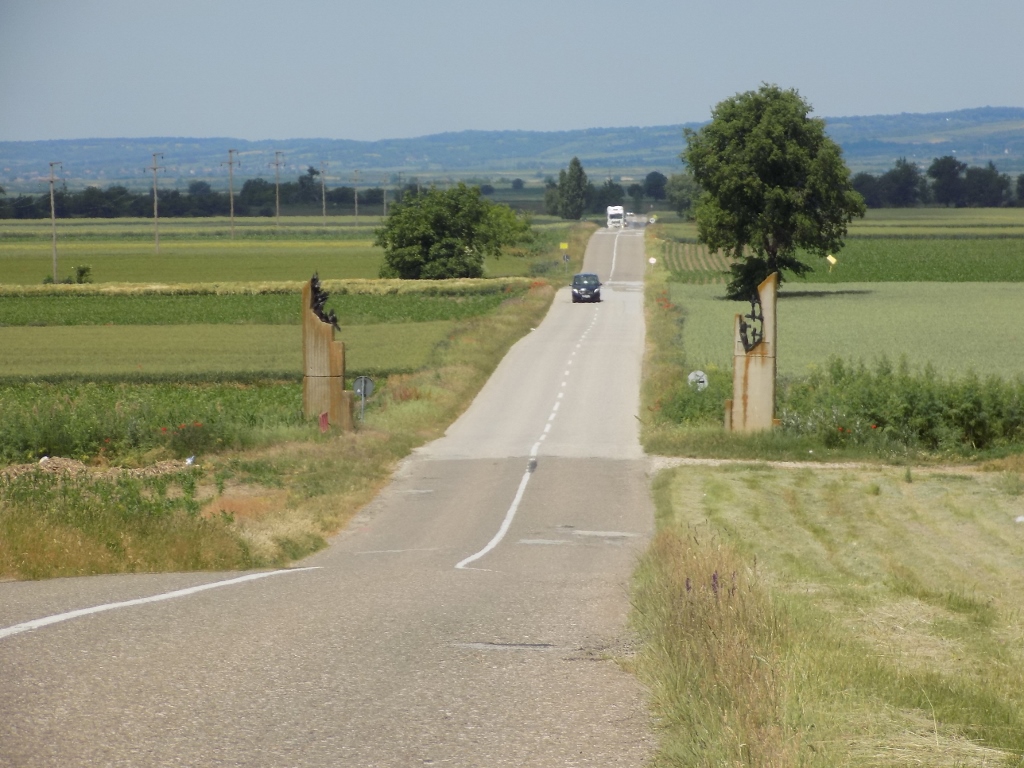 Landmark on the road to Stejanovci
Landmark on the road to Stejanovci
This is a memorial built here at some 30 metres away from the place where on 2 September 1943 the Germans and the Yugoslav partisans exchanged prisoners: 28 German solders for 64 partisans. What makes this significant is that fact that by this action the German occupation forces practically recognised the partisan movement as an equal one. The monument was built in 1971.
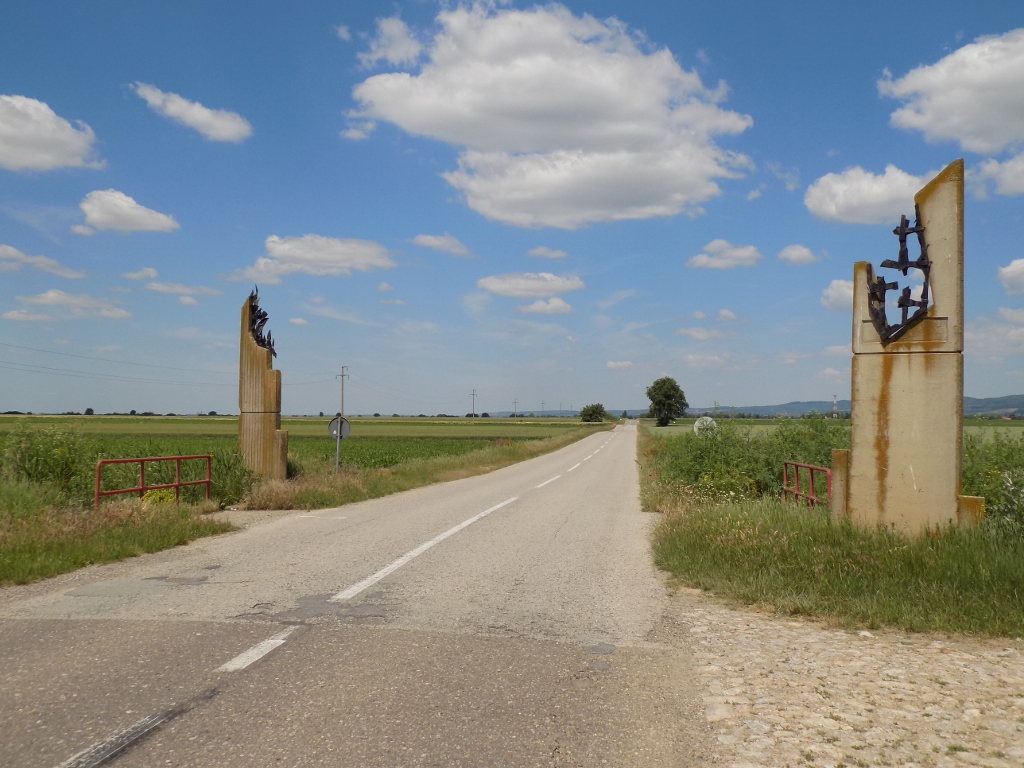 “Most razmene” Memorial on the Ruma-Stejanovci road
“Most razmene” Memorial on the Ruma-Stejanovci road
After the brief stop by this memorial, I drove to village Stejanovci (Стејановци). It is slightly off the main road and two almost parallel streets lead to its centre. I entered the village driving along one street and exited it driving along the other one. In the centre, I parked the car since there is a church that is immobile cultural property of great importance and that is the Church of St. Nicholas. This is a single-nave building with an adjacent bell tower on the west side, extensions for the choirs, as well as a five-sided apse (the only such apse among the churches I have seen during this trip). All of this may be seen nicely in the photo below.
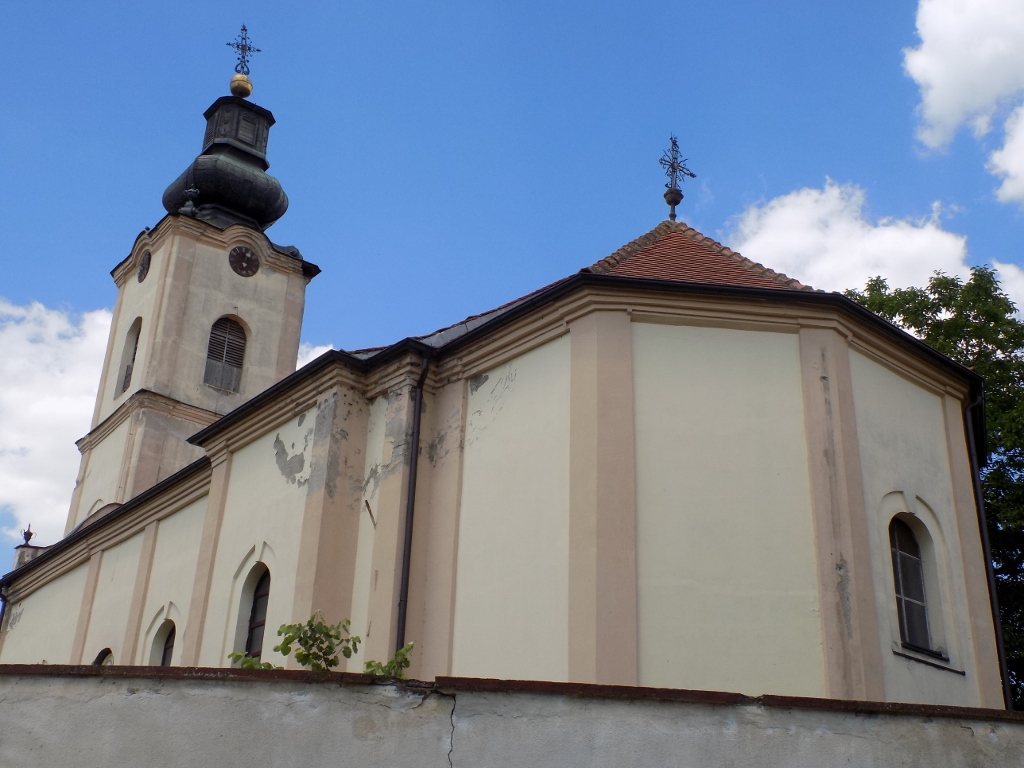 Church of St. Nicholas in Stejanovci
Church of St. Nicholas in Stejanovci
The church is situated on a tiny elevation and the churchyard is surrounded by a built fence. I climbed the stairs leading to the gate in the fence, but it was locked. The only thing I could do was to take a photo of the south entrance into the church that was also closed.
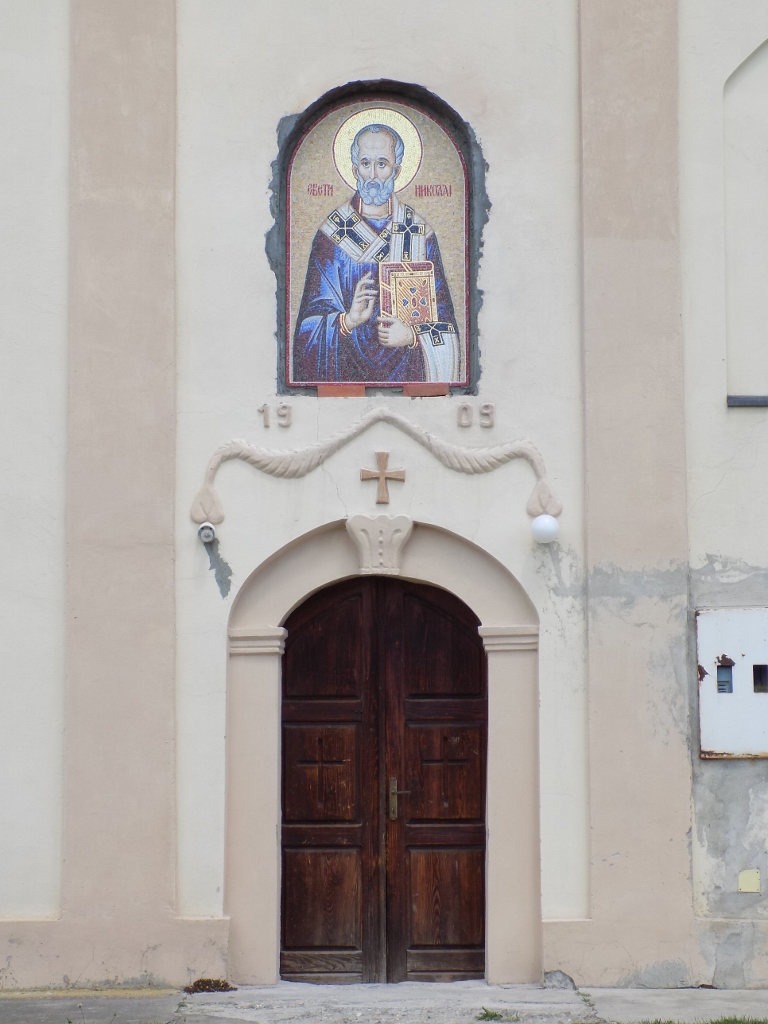 Church of St. Nicholas in Stejanovci, the south portal
Church of St. Nicholas in Stejanovci, the south portal
I got down to the car, but still I first walked a little around in order to see the church from other angles.
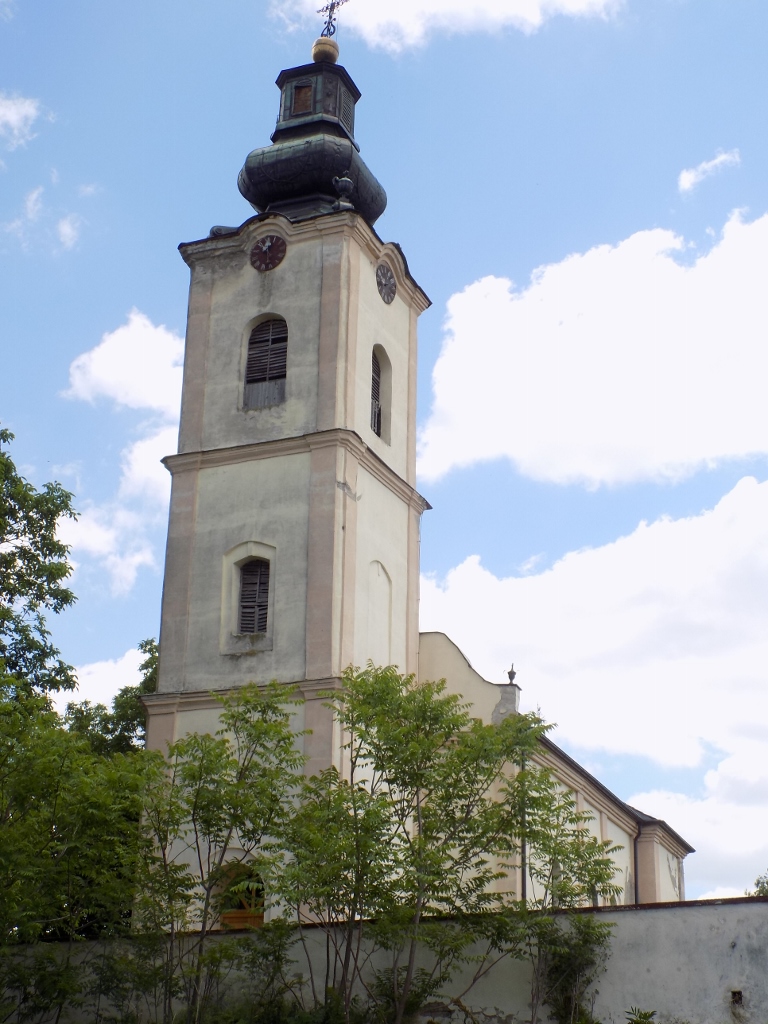 Church of St. Nicholas in Stejanovci
Church of St. Nicholas in Stejanovci
I also saw a woman by the crossroad near the church and so I asked her when the church was open. She referred me to the house inhabited by the priest and his family that is practically on the plot of land right next to the churchyard. I went there and rang at the gate, and soon the priest’s wife came and told me that her husband was away on business in Novi Sad, while she had two toddlers and could not help me with the visit to the church, which was quite fine with me. Still, she did give me some time, so we chatted a little. She told me that the church is always open on Sundays and when there are important feasts, which also clarified to me why several of the churches I wanted to visit were closed. Most of them are in villages where during summer the population attends to the fields or goes about some other business during the day, rather than going to the church. So I concluded that one should probably visit the churches either earlier in the morning (still not certain) or precisely on Sunday and when there are important feasts. I found this to be useful information for the future. Namely, village Stejanovci seemed particularly pretty to me and although it appeared rather “sleepy” I would not mind at all coming here again in an attempt to visit the church.
This way, I got into the car and headed for the exit from the village. In the documentation for this trip I found information saying that there is also the birth house of a people’s hero from WWII, but apparently it was demolished back in 1954 with a more contemporary version built in its place. This certainly was not a reason for me to stay in Stejanovci any longer, so I simply drove back to Ruma. There I decided to go to the motorway this time and some 60 km farther was my home. I got back there exceptionally content with my travel plan, the selection of the sights I visited and the experiences.
As the closing of these travel stories and as a reminder of this wonderful trip, here is a short “film” made of my photos, as well as the map: